



We are building CultureStake, the world’s first collective cultural decision making app (using Quadratic Voting on the blockchain) because we want to enable all communities to choose the creative experiences they want to have in their own areas. The original idea was driven by an awareness that top down arts programming is increasingly problematic. We wanted to find a way to give more people more of a say in what art and culture gets produced in their neighbourhoods – and more opportunity to be the co-creators. In a nutshell, our mission is to put the public at the heart of public arts.
Communities
We want communities to explore and learn together what we all want to experience in our localities. For example how might a theatre audience cast a play differently or a park community curate a public art exhibition?
Cultural Organisations
We want deeper, richer and more open consultation with the communities cultural organisations work for. For example, how might a city council find out which new artwork should occupy a recently vacated public plinth. Or how might an arts organisation discover which artist on their shortlist should be next summer’s blockbuster?
For Everyone
We want a data commons that widens the conversation about how art is valued by different communities around the world. For example, how might our ideas about culture change if we can see what’s important to other people?
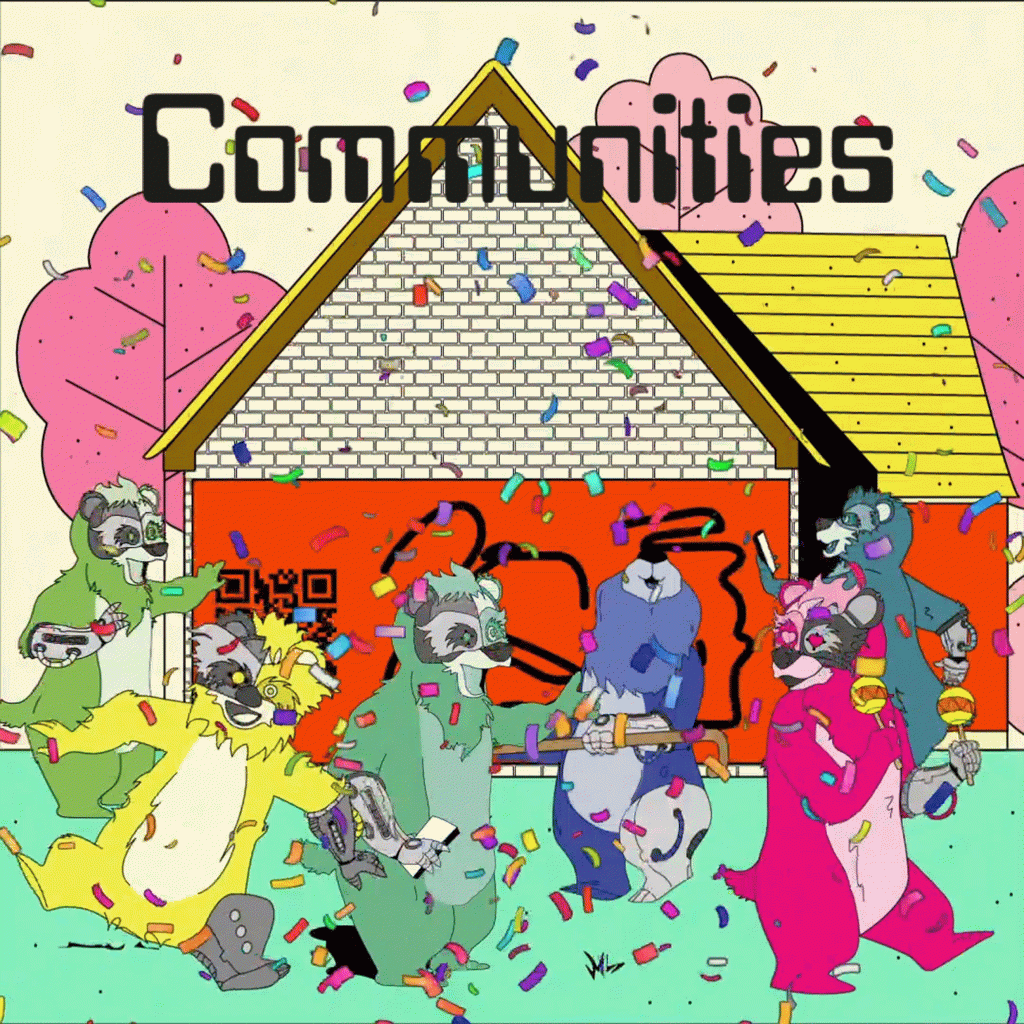
We are using Quadratic Voting because it takes us all from confusing numbers to nuanced feelings.
In QV voters receive a number of ‘vibe credits’ which they can allocate to different creative proposals to express their support. The quadratic function means that showing a strong preference comes at a credit cost. Or rather:
This means that QV is quite unlike any other voting process. Indeed, unlike a one person one vote system, in QV votes express not just what we care about but how much we care! This matters because one person one vote systems usually don’t present the reason why someone voted the way they did or how strongly they felt about it. Politics have taught us not to trust the way votes are interpreted. Voters’ intentions are often misrepresented and communities are polarised about the limited information. Whereas QV allows us to express the intensity of our convictions, giving each of us:
Plus we’ve designed CultureStake so vote organisers can weight the votes of those closest to the issues that matter. For example, in our use of CultureStake for the People’s Park Plinth, any votes cast inside Finsbury Park mean more overall. So those most affected get more of a say.
And we run all CultureStake votes on the blockchain because the blockchain is like a big indelible ledger. This means that a vote cannot be rigged and is always stored extra safely so what we can promise voters is that they can trust our system.
There are many ways to run a CultureStake vote. A theatre could develop an unfinished performance and ask communities to choose the next steps. An arts organisation might offer up a range of different events and invite communities to choose what they want to encounter. Either way, the voting system doesn’t rely on asking everyone to just pick their favourite, but rather explore their thoughts and feelings in relation to a set of questions. So the result is always knowing more about what communities think and feel. Plus, we never show what ranked 1st, 2nd, or 3rd, but rather what was selected and what thoughts and opinions drove people’s selections.
At Furtherfield we are using CultureStake to power our People’s Park Plinth initiative in Finsbury Park. The concept behind the People’s Park Plinth is that our Finsbury Park buildings and even the park itself will act as a plinth for public digital artworks chosen by our communities using our CultureStake app.
The Gallery building will therefore provide an interface where people can scan hoardings to access works which offer a range of XR-enabled experiences in the park. Annually there will be a set of ‘proposal’ artworks, which will give people a first glimpse at what can be created more fully later in the year. Everyone will have time to explore these proposals and then use CutlureStake to choose what they want.
In our pilot year we tripled local engagement and received amazing local feedback like this:
“I live nearby and I’ve been talking about this with my friends for months, it’s such a great idea, to give people a say!”
“[…]decentralisation allows people to have slower but more grassroots-based management of any decision making.”
“I think it’s good that we have a say as well. And I really love voting.”
“Usually I guess I choose art by going to a place and supporting it like that but I’ve never been involved so much in really deciding on what I will see next. And yeah it makes me actually feel good too.”
“[…] quite a lot of times actually […] art is reserved only for the higher echelons of society and I feel like this is really nice that anyone can come in and you vote for who you like or what art you like.”
“I do feel represented…”
We are now in the next phase of development and are actively looking for partners from different types of venues and communities to partner with us so we can explore their unique needs and ensure we have a robust system.
If you are a small, medium, large, networked, physical, touring, online or any other type of cultural entity that wants to deepen your community connections we would love to hear from you. We want to know how you would use CultureStake in your own context and what you would like to achieve. To find out more contact Charlotte and she’ll arrange a meet up.
Furtherfield has worked with decentralised arts and technology practices since 1996 inspired by free and open source cultures, and before the great centralisation of the web.
Visit DECAL website
10 years ago, blockchain technologies blew apart the idea of money and value as resources to be determined from the centre. This came with a promise, yet to be realised, to empower self-organised collectives of people through more distributed forms of governance and infrastructure. Now the distributed web movement is focusing on peer-to-peer connectivity and coordination with the aim of freeing us from the great commercial behemoths of the web.
There is an awkward relationship between the felt value of the arts to the majority and the financial value of arts to a minority. The arts garner great wealth, while it is harder than ever to sustain arts practice in even the world’s richest cities.
In 2015 we launched the Art Data Money programme of labs, exhibitions and debates to explore how blockchain technologies and new uses of data might enable a new commons for the arts in the age of networks. This was followed by a range of critical art and blockchain research programming:
Building on this and our award winning DAOWO lab and summit series, we have developed DECAL – our Decentralised Arts Lab and research hub.
Working with leading visionary artists and thinkers, DECAL opens up new channels between artworld stakeholders, blockchain and web3.0 businesses. Through the lab we will mobilise research and development by leading artists, using blockchain and web 3.0 technologies to experiment in transnational cooperative infrastructures, decentralised artforms and practices, and improved systems literacy for arts and technology spaces. Our goal is to develop fairer, more dynamic and connected cultural ecologies and economies.
For more see our Art and Blockchain resource page.
This event is part of exhibtion, Poetry for Animals, Machines and Aliens: The Art of Eduardo Kac, at Furtherfield Gallery.
Inspired by and building on the exhibition, these workshops will draw together themes and issues which have emerged from the Arts and Humanities Research Council thematic research programmes. Workshops are led by Andrew Prescott, curator of the exhibition and Professor of Digital Humanities at the University of Glasgow.
Digital Transformations and Community Engagement
18 April 2018, 10:30 – 16:00
How can we promote collaboration between communities and academic researchers? Do digital methods help create community engagement?
FREE | booking essential
Reconnecting Artistic Practice and Humanities Research
25 April 2018, 10:30 – 16:00
Can a renewed dialogue between humanities scholars and artistic practice provide innovative perspectives to confront current social and cultural challenges?
FREE | booking essential
Language and Diversity
8 May 2018, 10:30 – 16:00
Exploring the role of language and translation in promoting understanding and communication within, between, and across diverse cultures.
FREE | booking essential
Science in Culture
23 May 2018, 10:30 – 16:00
How can art engage with science and technology? And how can art explore the role of science in culture?
FREE | booking essential
More information about Poetry for Animals, Machines and Aliens: The Art of Eduardo Kac
We are based in the heart of Finsbury Park, which is used by roughly 55,000 people weekly in a neighbourhood described as ‘superdiverse’ for the nearly 200 languages spoken locally. Working with park users and stakeholders, artists, techies, researchers, policy-makers, and other local arts organisations we have developed a new approach to cultural co-creation in this much loved shared public space: ‘Platforming Finsbury Park’.
Our aims are to:
An important part of this work is our 2019-21 programme, Citizen Sci-Fi, designed to engage our local community in creative imaginings of the future of Finsbury Park. We are producing a range of participatory networked art practices that respond to today’s important questions, in this unique urban park context, that empower local participants, and draw on international areas of practice.
By transforming Finsbury Park into a canvas for participatory digital arts we want to explore how insights drawn from the locality, and meaningful co-created cultural experiences can improve wellbeing for people, establishing new arts practices for Finsbury Park and other public spaces and localities.
Read more about this project in our Spring 2018 Editorial
This 3-year programme combines citizen science and citizen journalism by crowdsourcing the imagination of local park users and community groups to create new visions and models of stewardship for public, urban green space. By connecting these with international communities of artists, techies and thinkers we are co-curating labs, workshops, exhibitions and Summer Fairs as a way to grow a new breed of shared culture.
#CitSciFi – crowdsourcing creative and technological visions of our communities and public spaces, together.
The Time Portals exhibition, held at Furtherfield Gallery (and across our online spaces), celebrates the 150th anniversary of the creation of Finsbury Park. As one of London’s first ‘People’s Parks’, designed to give everyone and anyone a space for free movement and thought, we regard it as the perfect location from which to create a mass investigation of radical pasts and futures, circling back to the start as we move forwards.
Each artwork in the exhibition therefore invites audience participation – either in its creation or in the development of a parallel ‘people’s’ work – turning every idea into a portal to countless more imaginings of the past and future of urban green spaces and beyond.
For this Olympic year we will consider the health and wellbeing of humans, other life-forms and machines.
For this year of predicted peak heat rises we will consider how machines can work with nature.
DOWNLOAD
Full exhibition programme
‘Interface Perception. The Cybernetic Mentality and Its Critics: Ubermorgen.com’ by Søren Bro Pold
SEE IMAGES FROM THE PRIVATE VIEW
Beyond the Interface is an exhibition and series of events presented by Furtherfield, where leading international contemporary artists explore the technical devices that pervade our lives.
“The interface is the sense organ of the computer, whereby it becomes part of human culture” – Søren Bro Pold1
How much of our life do we spend in front of screens? Typically young adults in the UK spend more than a third of their waking lives watching TV or using computers, smartphones and tablets.2 These glowing rectangles are just one interface through which we contribute to the growing global human-machine network.
Nowadays a multitude of sensors proliferate in these same devices along with the chips and transmitters that are embedded in all consumer goods. Our actions are tracked, our utterances and exchanges are monitored, and our behaviours inform the design of future media, systems and products. This is the cybernetic loop.
The interface is the boundary across which information is exchanged, causing a transformation in one or both sides of that boundary. Between individuals, corporations and states; beliefs and disciplines; components of computer systems; or machines and living beings. Interfaces have always been a site of control, hidden in plain view: symbolic, social or technological. Seduced and habituated, we forget to question how we are dominated and reprogrammed by the very facilities that are supposed to free us as part of the digital revolution. Lori Emerson suggests this is an “overwhelming push to disempower users/consumers with closed devices”.3
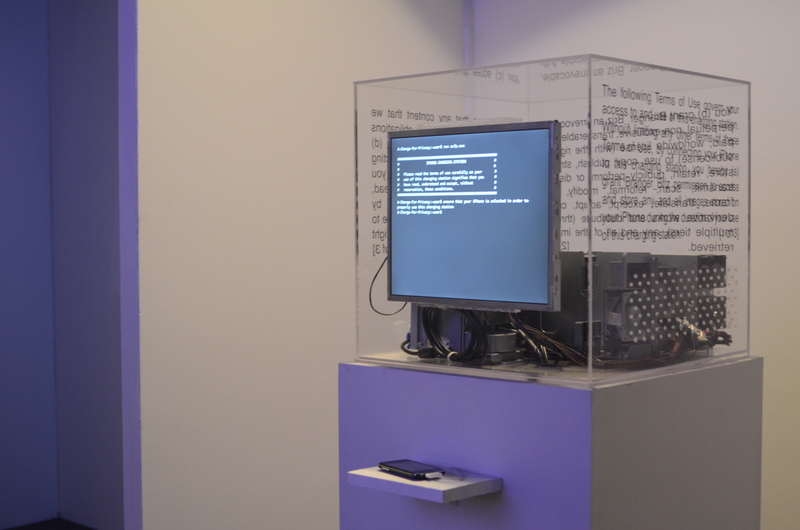
As you approach Furtherfield Gallery in the middle of London’s Finsbury Park, you will notice that the external walls have been transformed into an immersive installation of lush, rippling images of water lilies, leaves and other organic forms. Giverny Remediated is an installation of performative prints by Nathaniel Stern (US) continuing his ‘Compressionism’ series of work. Part of Stern’s Compressionist series, this work references Monet’s immersive painting installation Water Lilies, painted a century ago, only in this case the artist has strapped a hacked scanner to his body in order to create the works.

“Compressionism follows the trajectory of Impressionist painting, through Surrealism to Postmodernism, but rather than citing crises of representation, reality or simulation, my focus is on performing all three in relation to each other.”4
In a new commission Stern will create ‘Rippling Images of Finsbury Park’, a new public artwork created in the boating lake (which sits adjacent to Furtherfield Gallery). The artworks will be available to download by public USB installed in the Gallery walls as part of Dead Drop, the offline, anonymous, file sharing, peer to peer, network.5

Visitors can also download the essay that sets out many of the concepts behind this exhibition. ‘Interface Perception – The Cybernetic Mentality and Its Critics: ubermorgen.com’ by Søren Bro Pold (editor of Interface Criticism, Aesthetics Beyond Buttons) explores how we perceive interfaces and the role that art has to play in making technology more feelable.
Beyond The Interface – London is a remix of an exhibition co-curated by Furtherfield with Julian Stadon for ISMAR 2014, the International Symposium on Mixed and Augmented Reality, that took place in Munich in September 2014.
Happening alongside this exhibition
Scan the park
Dates June-July to be confirmed, Furtherfield Gallery
Workshops for all ages to hack your own scanner. Create your own rippling images of Finsbury Park based on the Nathaniel Stern commission. Also chance to show your work in Furtherfield Gallery. Please contact info@furtherfield.org to join the waiting list.
Telluro-geo-psycho-modulator workshop and field trip with Jonathan Kemp
2-3 May, Furtherfield Commons
How are our brain states modulated by the interference patterns created by our immersion in natural weak geomagnetic fields?
Living Assemblies – Design Your Silken Self
6 – 7 June, Furtherfield Commons
In partnership with The Arts Catalyst. A hands-on workshop with Veronica Ranner, investigating the coupling of the biological material silk, with digital technologies
WWW TV installation, Web We Want Festival
28-31 May, Southbank Centre, London
Featuring Grey Matter by Jennifer Chan and Facial Weaponization Communiqué: Fag Face by Zach Blas against a bank of monitors displaying videos found on the Web of contextual media, systems and products.
Back to the Future
Sunday 31 May 17:00 – 18:00, Queen Elizabeth Hall Front Room
To close the Web We Want festival, Jude Kelly CBE, Artistic Director of Southbank Centre is joined by Renata Avila (Web Foundation), Sarah T Gold (Alternet, WikiHouse Foundation) Ruth Catlow (Furtherfield) to recap the festival and look towards the next 25 years of the Web – what’s in store for the future and how can we make an impact on the shape of the Web?
Symposium: Designing Digital Creative Commons for the Performing Arts
27 June
Digital tools for communication, artistic collaboration, sharing and co-creation between artists, and creative audiences. Booking info to follow soon.
Museum of Contemporary Commodities
Running parallel to the exhibition is an artistic research project by Paula Crutchlow and Dr Ian Cook, exploring trade justice issues by presenting the things we buy today, as the heritage of tomorrow.
Walkshop led by data activist Dr Alison Powell
7 May 6-8.30pm, Furtherfield Commons
To find out more about the local retail environment, local commodities, trade-justice and data processes in Finsbury Park. As part of the Museum of Contemporary Commodities.
Commodity Culture social event
Saturday 13 June 11am-3pm, Furtherfield Commons
Drop-in for cake and a cup of something, and a chat about trade and exchange in Finsbury Park. Open to everyone. As part of the Museum of Contemporary Commodities.
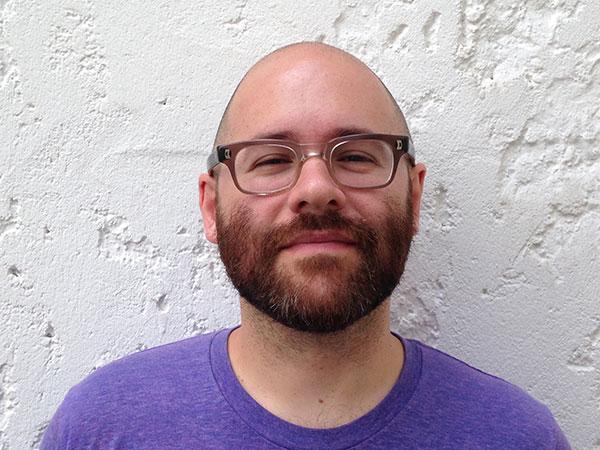
Zach Blas is an artist, writer, and curator whose work engages technology, queerness, and politics. Currently, he is an Assistant Professor in the Department of Art at the University at Buffalo. His work has been written about and featured in Art Review, Frieze, Art Papers, Hyperallergic, Rhizome, Mousse Magazine, The Atlantic, Al Jazeera America, The New Inquiry, Leonardo Electronic Almanac, and Wired. http://www.zachblas.info/
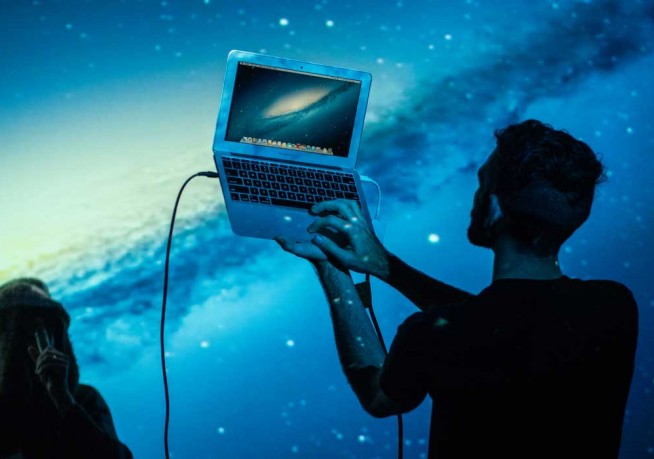
Branger_Briz are artists, educators && programmers bent on articulating our digital landscape creating memorable interactive projects for themselves && clients. To them contemporary culture means digital culture. They are driven by a desire to share our digital literacies, so their work tends to be public-facing && leverage new-media. They specialise in producing custom projects from concept >> design >> development >> launching/sharing && love every step in the process.
http://brangerbriz.com/
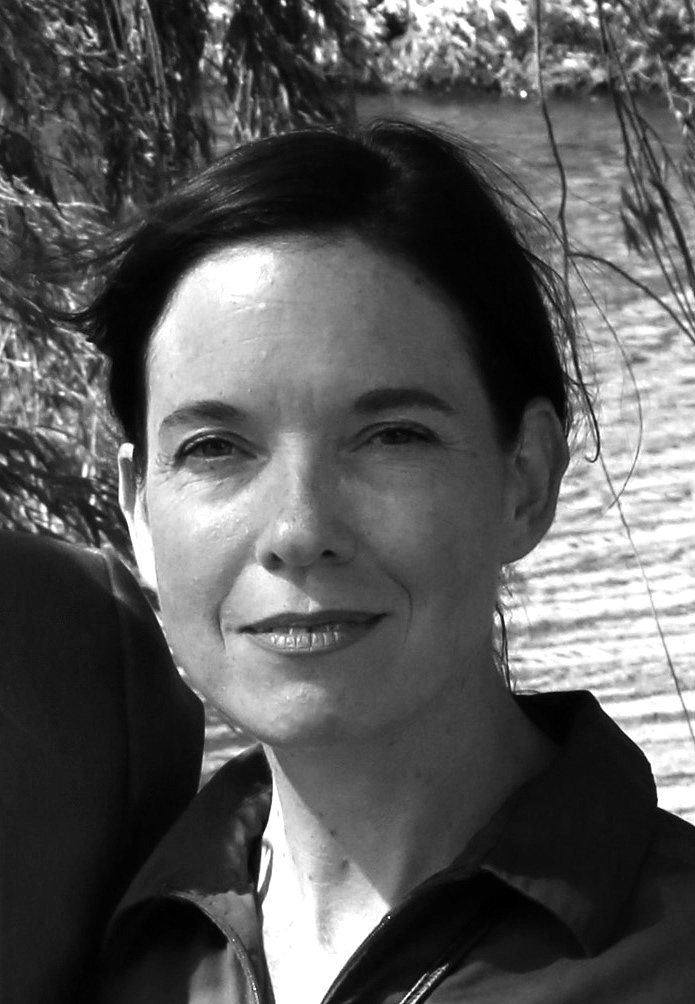
Mez Breeze is an Australian-based artist and practitioner of net.art, working primarily with code poetry, electronic literature, and digital multimedia works combining text, code, image and sound. Born Mary- Anne Breeze, she uses a number of avatar nicknames, including Mez and Netwurker. As of May 2014, Mez is the only digital writer who’s a non- USA citizen to have her comprehensive career archive (called “The Mez Breeze Papers”) housed at Duke University, through their David M. Rubenstein Rare Book & Manuscript Library.
http://mezbreezedesign.com/
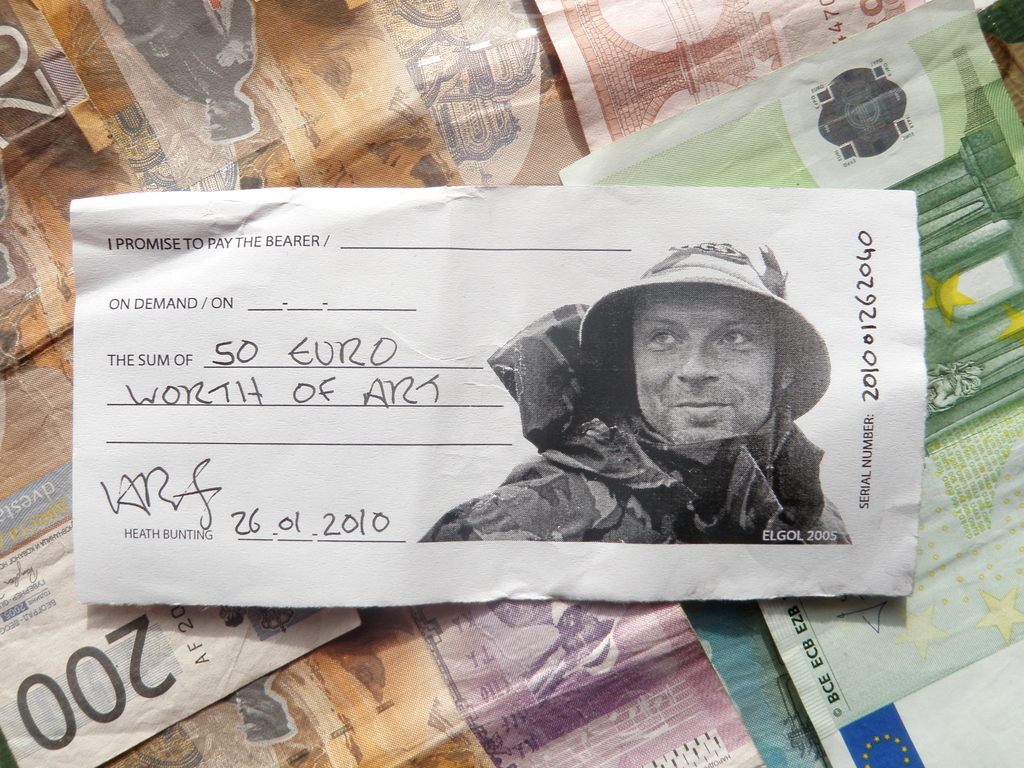
Heath Bunting was born a Buddhist in Wood Green, London, UK and is able to make himself laugh. (currently, reduced to only smile) He is a co-founder of both net.art and sport-art movements and is banned for life from entering the USA for his anti genetic work. His self taught and authentically independent work is direct and uncomplicated and has never been awarded a prize. He is both Britain’s most important practising artist and the World’s most famous computer artist.
http://www.irational.org/heath/
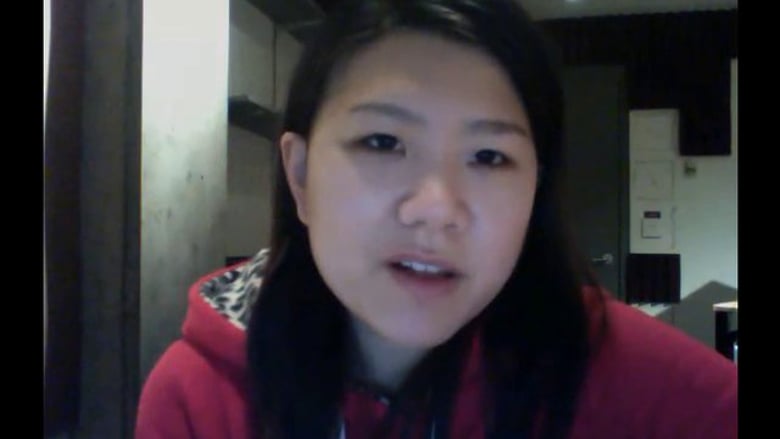
Jennifer Chan makes remix videos, gifs and websites that contend with gendered affects of media culture. Chan had solo presentations at the Marshall McLuhan Salon in the Embassy of Canada in Berlin for Transmediale 2013 (Germany), Future Gallery (Berlin), Images Festival (Toronto), Vox Populi (Philadelphia) and recently LTD (Los Angeles). She has a HBA in Communications, Culture, Information Technology from University of Toronto and a MFA in Art Video from Syracuse University. Chan was born in Ottawa, raised in Hong Kong, and is now based in Chicago. She co-organizes Dorkbot Chicago and helps women learn code at Girl Develop It. http://jennifer-chan.com/
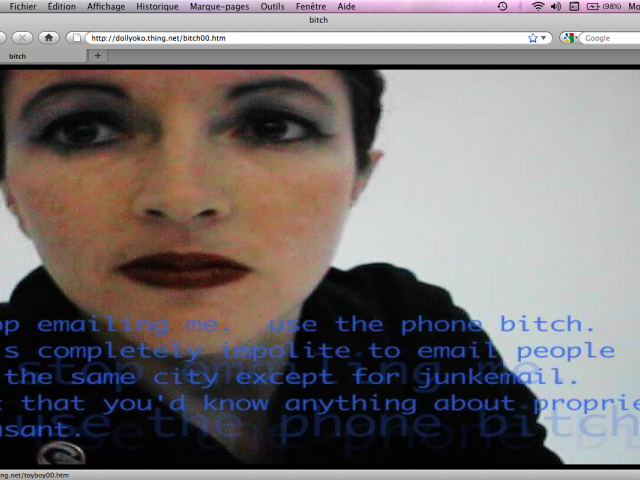
Francesca da Rimini explores the poetic and political possibilities of collaborative (tel)embodied play. Early net projects include GashGirl, FleshMeat and the award-winning labyrinth dollspace. As cyberfeminist VNS Matrix member she inserted slimy interfaces into Big Daddy Mainframe’s databanks, perturbing the (gendered) techno status quo. Her doctoral thesis at the University of Technology Sydney investigated three diverse cultural activism projects seeding the formation of new collective subjects. She has co-authored Disorder and the Disinformation Society: The Social Dynamics of Information, Networks and Software (Routledge 2015). http://gashgirl.sysx.org
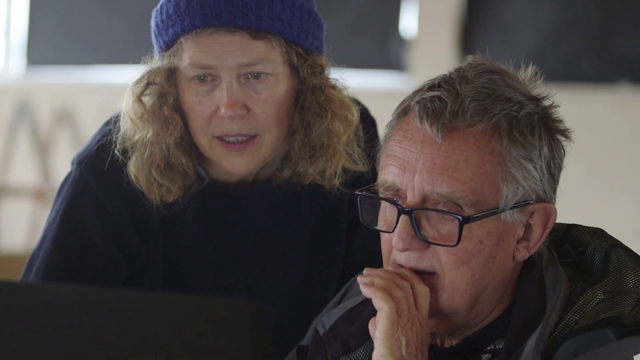
Genetic Moo (Nicola Schauerman and Tim Pickup) have been creating individual interactive art works for over 5 years. They create Microworlds, digital ecosystems and living installations that are always changing, mutating, and evolving in front of your eyes. Both gained Masters degrees from the Lansdown Centre for Electronic Arts. They have exhibited extensively in galleries, festivals and museums.
http://www.geneticmoo.com
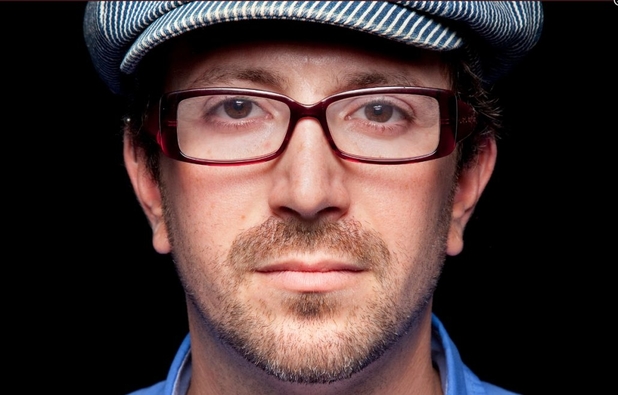
Nathaniel Stern is an artist and writer, Fulbright grantee and professor, interventionist and public citizen. He has produced and collaborated on projects ranging from ecological, participatory and online interventions, interactive, immersive and mixed reality environments, to prints, sculptures, videos, performances and hybrid forms.
His book, Interactive Art and Embodiment: The Implicit Body as Performance, takes a close look at the stakes for interactive and digital art, and his ongoing work in industry has helped launch dozens of new businesses, products and ideas.
http://nathanielstern.com
Beyond the Interface – Artists Panel
Web We Want Festival – Southbank Centre
28-31 May 2015
Chair – Ruth Catlow
Speakers (TBC)
EXHIBITION LOCATION
Furtherfield Gallery
McKenzie Pavilion, Finsbury Park
London N4 2NQ
T: +44 (0)20 8802 2827
E: info@furtherfield.org
Visiting information
PANEL LOCATION
Southbank Centre
Belvedere Road, London SE1 8XX
Directions
FOR MORE INFORMATION
Contact Ruth Catlow, Furtherfield
[Trigger warnings for just about everything goes here. Please Do Not Read the following if you’re sensitive, or concerned about trigger(ing)s.]
“An uproar of voices was coming from the farmhouse. They rushed back and looked through the window again. Yes, a violent quarrel was in progress. There were shoutings, bangings on the table, sharp suspicious glances, furious denials…Twelve voices were shouting in anger, and they were all alike. No question, now, what had happened to the faces of the pigs. The creatures outside looked from pig to man, and from man to pig, and from pig to man again; but already it was impossible to say which was which.”
– George Orwell, Animal Farm.
Today’s online spaces are communication minefields. When interacting in multiplayer games or social media niches, networks come drenched in reactivity bile. And although we might seem to bile-dilute, instead we intellectually saw at each other through a polite veneer. Here, civil discourse is label-trotted. Discourse bile may also erupt in balls-to-the-wall screaming matches. Such bouts involve trollbaiting, d0xxing, and Internet Rage Machine power-ups. Whatever the magnitude/form, online dialogues appear to be flooded with antagonistic commentary.
Truncated attention spans rage-burst. Such anger pockets are far from static: fuelled by such shameblood, the righteous degrade. We humiliate in order to inflate. We confront-tar and belittle-feather. The [s]urge for relevancy is sycophantically baked. We mobilize to unearth, to finger-point: we present affectivity as fact. Hate groups spread across factions, divide-blurring.
The search for sodalities is constant. Nuances are fudged. Contexts are ignored. Catharsis mutates through a checklist that reduces, confines, and truncates. We are force-fed trauma anecdotes as reality fulcrums. Baggage is exposed in painful lumps. We are not consideration-encouraged: we are expectation-drilled. We must agree. Must acquiesce. Must uncritically support. Anything else denunciation-equates.
Public shaming is the norm. We bully. We armchair-critique. Bipartisan voices lynchmob-morph, all-indignation-like. Roughshodders censor and context erase. Power drugs the inflamed and injects the underdog[s] with sudden shifting surges. Reference frames are smashed, then reiterated repeatedly till they become a thing of horror, of replication thrown from “side a” to hit “side b”. Such targets are then mirror-captured and magnified. Empathy is to be derided as weakness. Barbs are flung at all who seek to ponder “isms” or reclaim them. We must not listen in order to comprehend, to understand: we must shout.
We word weaponise [“…getting all soul-rapey on SJWs”/”…gut-cutting misogynistic neckbeards“/ “You are either with us or against us”]. Gator-screams and “die-cis-scum“-roars rule the day. We obliterate and issue-compress. We communication strangle. Equality is attainable through force. Aggression trumps assertion. Sarcasm blights compassion. Rudeness rewrites decency.
SUCH TERRIBLE WHITEWASHING SEALIONS

Power-grabs blind the sensitive. To destroy/troll/shame/swamp/embarrass/belittle/d0xx is to “win”. Sense of perspectives lose while extremisms gain. Dialogue is gamed: the loudest voices squash and rip, tear and silence. Threats echo the noose. Implications drive output. The end-goal is attention, ratification, dis[e]ruption: a pendulum power swing designed to flatten and redress. We obscure and vilify. We replicate exclusion ethics. We buck-and-doe-pass.
Online purging results in strange social crevices. Encouraged to instantaneously blurb our stream-of-tweeted-consciousness, we are off the chain. We spontaneity-bark and bleat [at] everything and all. Cohesion shatters. We no longer rely on institutions to dictate, to guide, to sanction. Moral Absolutists war-trawl Moral Relativists. The Arab Spring has turned us inside out. Unsure, we turn on each other. We emoji expose and deride. We [slut]shame and attack: all within banners born from psychologies spouting the benchmark worth of individualisation. Selfies become our egocentric standard.
We once attempted to codify, to restrain. But now, all gloves are off. We scrabble and lunge. We showcase-badge based on our version of “the categorical truth”. We bang and bleed against these corners, these intersections of emotion and intellect. Of private and public. Of control and openness. There is no room for reflection, for consideration, for clarity.
We refuse anything that calms. Online spaces are for battling. Playfulness and cohesion are sacrificed. Righteous mobs insult fling: they ratify rather than reappropriate. Alternates gleefully spout these insults as proof, stamp-ammo-ing all the while. There are, however, those who stay and observe. We await the wind-down. We desire an eventual dissolve: a fundamental shift. They can’t last, these discourse patterns. We wait for rage to course-run, for rage-fatigue. We await the next mediation bump.
In the 1990s the idea of the virtual idol singer escaped from Macross Plus’s Sharon Apple and William Gibson’s Rei Toei into the cultural imagination. Blank slates for market forces and projected desires, virtual idol singers differ from Brit School drones only in that there is no meat between the pixels and the data.
Hatsune Miku is a proprietary speech synthesis program with an accompanying character whose singing the software notionally renders. Miku the software is a “Vocaloid” synthesizer using technology developed by Yamaha and the sampled voice of voice actor Saki Fujita. Released in 2007, with additional Japanese voices in 2010 and an English version in 2013, the software topped the charts in Japan on release and has led to spin off games and 3D modelling software. It’s claimed the software has been used to produce over 100,000 songs.
Hatsune Miku the character is a cosplayer’s dream, a sixteen year old (with a birthday rather than a birthdate) Anime young-girl with impossibly long aqua hair (there are male Vocaloids as well). She’s had a chart-topping album, “Exit Tunes Presents Vocalogenesis feat. Hatsune Miku” (2010), and started performing “live” on stage in 2009 with Peppers Ghost-style technology. She’s available as (or represented as) figurines, plushes, keychains, t-shirts, and all the other promotional materials produced for successful Anime characters, pop stars, or both. Her likeness can be licensed automatically for non-commercial use. This makes her fan-friendly, although not Free Culture, and means that fan depictions and derivations of her are widespread. The majority of “her” songs are by fans rather than commercial producers.
She is now appearing in “The End” (2013), a posthuman Opera (with clothes by a designer from artist-suing fashion company Louis Vuitton) where she takes the stage as a projection among screen-based scenery without a live orchestra or vocalists. Which means that someone programmed the software to produce synthesized vocals and someone else negotiated the rights to use the likeness of the characted commercially dressed in a particular designer’s virtual clothing. “She is now appearing” is easier to say, but like Rei Toei this is an anthropomorphised representation of the underlying data.
It’s getting rave reviews, and the music is competent, enjoyable and affecting: strings, electronica and Supercollider-sounding glitches and line noise under breathily cute synthesized vocals. The visuals are CGI with liberally applied glitch aesthetics, mostly featuring Hatsune Miku and a cute chinchilla-ish animal sitting in or falling through space. The plot is a meditation on what mortality and therefore being human can possibly mean to a virtual character. To quote the soundtrack CD booklet notes:
Miku, who has had a presentiment of her fate, talks with animal characters and degraded copies of herself to ask the age-old questions ‘what are endings?’ and ‘what is death?’.
The phantom in this particular opera is composer Keiichiro Shibuya, who appears onstage largely hidden by two smaller projection screens. As the man behind the curtain it’s tempting to read him as the male agent responsible for the opera’s female subject’s troubles. His presence onstage also threatens to make him the human subject of what is intended to be a repudiation of opera’s European anthropocentrism. But without such an anchor the performance would seem less live and perhaps become cinema rather than opera. It seems that a posthuman opera needs a human to be post.
Music production is uniquely suited to the creation of virtual characters through tools, brands and fandoms. Hatsune Miku functions as a guest vocalist, a role combining artistic talent and social presence with a well understood standing in the economics of pop. In art, Harold Cohen‘s sophistiated art-generating program AARON was licensed as a screensaver anyone could run to create art on their Windows desktop computers, but despite its human name and human-like performance, AARON is never anthopomorphised or given an image or personality by Cohen. Could a virtual artist combining software and character similar to Hatsune Miku function in the artworld or in the folk and low art of the net and the street?
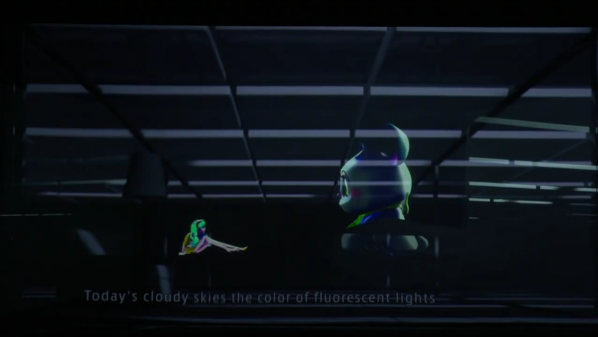
The license for Hatsune Miku the character is frustratingly close to a Free Culture license. Could a free-as-in-freedom Hatsune Miku or similar character succeed? Fandom exists as an ironisation of commercial culture, appropriating mass culture in a bottom-up repurposing and personalisation of top-down forms. Without the mass culture presence of the original work, fandom has no object. Perhaps then without the alienation that fandom addresses, shared artistic forms would not resemble fandom per se.
There are precedents for this. Collaborative personalities abound in art, such as Luther or Karen Blisset. And in politics there is Anonymous. There are also existing Free Culture character like Jenny Everywhere, or even the more informally shared Jerry Cornelius. So it is possible to imagine a Free Software Hatsune Miku, but it’s less easy to imagine what need this would meet.
Unlike the idol signers of literature and television, there’s no pretence that Hatsune Miku is an artificial intelligence. But she is an artifical cultural presence, created by her audience’s use of her technical and aesthetic affordances. Like the robots in Charles Stross’s “Saturn’s Children” (2008), Miku’s notional personhood (such as it is) is defined legally. As a trademark and various rights in the software rather than as a corporation in Saturn’s Children, but legally nonetheless. Heath Bunting’s “Identity Bureau” shows how natural and legal personhood interact and can be manufactured. It’s tempting to try to apply Bunting’s techniques to software characters. If Hatsune Miku had legal personhood, would we still need a human composer onstage?
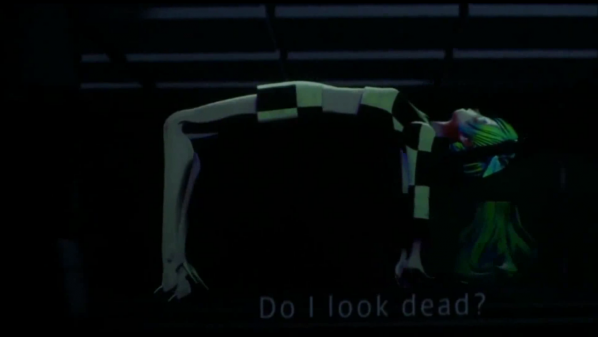
“The End” was written by that human composer, but software exists that can generate music and lyrics and to evaluate their chances of being a top 40 hit. Combining these systems with software made legal persons would close the loop and create a posthuman cultural ecosystem that would be statistically better than the human one, which I touched on here. It’s not just our jobs that the robots would have taken then. Given the place of music in the human experience they would have taken our souls.
Or the soullessness of Fordist (or Vectorialist) pop. Such a posthuman music system would exclude the human yearning and alienation that fan producer communities answer. It would be an answer without a question. Hatsune Miku is in the last analysis a totem, the products incorporating her are fetishes of the hopeful potential that pop sells back to us.
Despite “The End”, Hatsuke Miku has no expiry date and cannot jump a shuttle offworld. It’s not like she’s going to marry a fellow pop star or come tumbling out of networked 3D printers. But human beings are becoming less and less suitable subjects for the demands of cultural and economic life. In facing our mortality for us Hatsune Miku may have become more human than human.
The text of this review is licenced under the Creative Commons BY-SA 4.0 Licence.
“None but those who have experienced them can conceive of the enticements of science.” Mary Shelley, Frankenstein.
Rachel Falconer writes about the cyberfeminist art collective subRosa, a group using science, technology, and social activism to explore and critique the political traction of information and bio technologies on women’s bodies, lives and work.
Following a recent interview with the founding members of the collective, Hyla Willis and Faith Wilding, this article presents subRosa’s trans-disciplinary, performative practice and questions what it means to claim a feminist position in the mutating economies of biotechnology and techno-science.

The technological redesigning and reconfiguration of bodies and environments, enacted through the economies of the biotech industry, is an emerging feature of contemporary life. As these new ‘bits of life’ enter the biotech network, there is a slippage in our mental model of what constitutes the body, and more specifically, ‘life’ itself. As radically new biological entities are generated through the processes of molecular genetic engineering, stem cell cultivation, cloning, and transgenics, bio-artists and bio-hackers co-opt the laboratory as a site of critical cultural practice and knowledge exchange. Human embryos, trans-species and plants are constructed, commodified, and distributed across the biotech industry, forming the raw materials for bio-art, DIY biologists and open science culture.[1] These corporeal products and practices exist within new and alien categories, transgressing the physical and cognitive boundaries set by biopunk science fiction and edging towards the possibility of a destiny driven by genetics and life sciences. With the eternal rhetoric of a high-tech humanity, and the threat of Michel Foucault’s[2] biopolitics constantly on the horizon, today Harraway’s[3] myth of the cyborg exists in the form of corporeal commodities travelling through the global biotech industry. Scientific research centres stock, farm, and redistribute biological resources, (often harvested from the female scientists themselves). Cells, seeds, sperm, eggs, organs and tissues float on the biotech market like pork belly and gold. Seeds are patented, and other agro-industrial elements are remediated and distributed as bits of operational data across the biotech network. We/cyborgs[4], are manifested as a set of technologies and scientific protocols, and, as a result, the female body in particular, is reconfigured into a global mash-up of cultural, political and ethical codes.
The increasingly pragmatic realisation of the biotech revolution has provoked a ‘cultural turn’ in science and technology studies in general, and feminist science studies in particular. Carolyn Christov-Bakargiev’s dOCUMENTA (13) proposed an interdisciplinary approach to the role of science for ‘culture at large’. Certainly, by foregrounding the heavy hitters in the field such as Donna Haraway and Vandana Shiva, dOCUMENTA (13) laid claim to addressing the global conflicts of biotechnology. However, the feminist agenda was not specifically addressed, and the key issues of the impact of biotechnologies on feminist subjectivities were only paid minimal lip service. With the exception of Shiva[5], the tone of dOCUMENTA (13) hinted at a positivist, emancipatory take on biotechnology and technoscience without assuming a critical position. There was very little public debate or critical analysis engaging the philosophical, ethical, and political issues of feminism and female subjectivities within the realm of biotechnology.
Notably absent from last year’s dOCUMENTA (13), the activist feminist collective subRosa’s performative, interdisciplinary projects are channelled towards embodying feminist content, practices, and agency, and laying bare the impact of new technologies on women’s sexuality and subjectivities – with a particular emphasis on the conditions of production and reproduction. Through their research-led practice and pedagogical mission, the collective analyse the implications and conditions of the constantly surveyed female body, whilst mapping new possibilities for feminist praxis. subRosa interrogate the conditions of surveillance, private property rights, and other control mechanisms the female body is subjected to by ART(Assisted Reproductive Technologies). The collective’s hybrid, interdisciplinary practice navigates the multiple identities the female body has taken on through techno-scientific development, including: the distributed body, the socially networked body, the cyborg body, the medical body, the citizen body, the soldier body and the gestating body. In contrast to the overarching and pervasive illustration of the technoscientific cultural landscape painted by dOCUMENTA(13), the current members and founders of the collective, Hyla Willis and Faith Wilding, are very clear in their critical intent. The collective choreograph and place themselves within globalized bio-scenarios in order to question the potential for resistance and activism within these constructs.
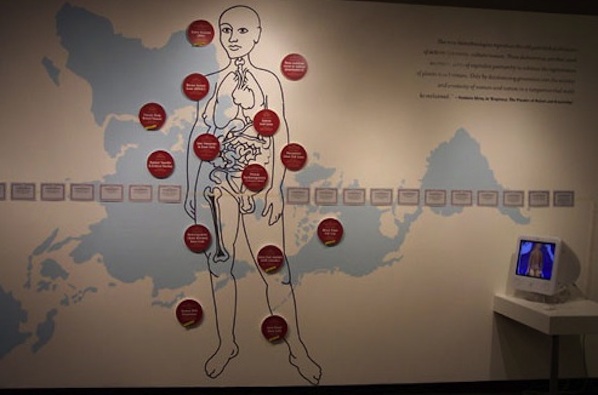
subRosa’s overarching vision to create discursive frameworks where feminist interdisciplinary conversations and experiments can take place, is research-led and takes its cue from the canon of radical feminist art practices. Cell Track: Mapping the Appropriation of Life Materials has featured in a number of exhibitions, most recently in Soft Power. Art and Technologies in the Biopolitical Age, Vitoria-Gasteiz, Spain. This project consists of an installation and website examining the privatization and patenting of human, animal and plant genomes in the context of the history of eugenics. Cell Track highlights the disparity between the bodies that produce stem cells and the corporations that control the products generated from them. Bringing together scientists, cultural practitioners and wider publics in the construct of the gallery space, subRosa generate discourse around the patenting and licensing of DNA sequences, engineered genes, stem cell lines and transgenic organisms. The project’s participatory aim is to set up an activist, feminist embryonic stem cell research lab in order to produce non-patented stem cell lines for distribution to citizen scientists, artists and independent biotechnologists. This environment of shared knowledge production and speculative, alternative, research activity is at the heart of subRosa’s social practice.

Due to the pedagogical nature of subRosa’s activities, the collective’s critical stance towards IVF and ART has proven to be particularly provocative, and their scepticism towards the emancipatory language of ‘choice’ co-opted by ART, has been met with some resistance by other feminist practitioners. However, it is in this very agonism[6] that subRosa wish to become more visible, and they welcome criticism and debate in the public discursive spaces that they create. In a recent interview, Faith Wilding and Hyla Willis both expressed their desire to generate an expanded, and deeper discussion about the wider issues involved in ART in particular and biotechnology’s effect on female identity in general. subRosa’s potential to reach wider publics and audiences is partially determined by the socio-political context of the communities in which they operate. Perhaps in reaction to this, subRosa’s focus is now shifting towards embracing the aforementioned ‘cultural turn’ in science as they address the position of feminist scientists themselves.
The imperative to reclaim feminist discourses and narratives in science is of growing concern to subRosa, as they believe that feminist agency lies in the practice of science itself. By relocating lab-work from the dominant scientific institutions to the public environment of the gallery, subRosa provide the critical space in which new feminist scientific praxis can operate,[7] and new dialogues and discourses can be created. Their conviction that political and critical traction lies in practice as discourse, and the potential of face to face encounters, is demonstrated in their recent project for the Pittsburgh Bienal: Feminist Matter(s): Propositions and Undoings (2011). In this installation, SubRosa take Virginia Woolf’s[8] assertion that ‘tea-table thinking’ provides an effective antidote to the male-driven ‘war-mentality brewed in boardrooms and command centers’ as their main conceit. Redeploying Woolf’s idea toward the rethinking of the traditionally male-dominated discipline of science, Wilding and Willis’ installation brings traces of the science laboratory to the intimacy and hospitality of the kitchen table, and in turn, also situates what is normally a private, feminized space in a more public domain.
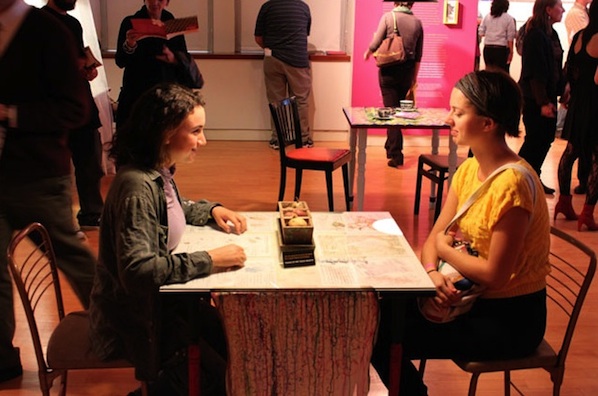
These tables stage a dialogue between one or two visitors in response to the presentation of female figures in science, both the popularly acknowledged and the underexposed. subRosa foreground women scientists past and present and reimagine an alternative, feminized history of science and technology. The installation explores feminism and participatory practices as modes of scientific research, with the aim of generating dialogue and discourse around the questioning of the dominant historical narrative of science. Specially tailored installations reside on each table, evoking lab work while celebrating the history of the women protagonists they play host to – from anarchist painter Remedios Varo to geneticist Barbara McClintock.

subRosa’s pedagogical imperative is at once inclusive and provocative, and their role as facilitators of a discursive space outside the traditional institutions and control structures of science, is where their radical aspirations lie. Pedagogical art practices often teeter on the brink of propaganda, and subRosa are quite comfortable with the propagandistic label. Considering the economic and cultural climate in the USA with regard to the politics of reproduction, their work has been particularly well received in the context of European cultural institutions, whereas in the USA there is greater interest for the work in academic institutional settings. Perhaps this could be symptomatic of the general privileging of discourses around intersex, transgender and queer subjectivities. The dominant bias of the gatekeepers of the artworld to showcase queer practices is evident in the promotion of artists such as Ryan Trecartin and Carlos Motta on the international circuit. Curators have tended to position artists addressing the gendered ‘Other’ within a contemporary queer framework, whilst keeping feminist art practices on the peripheries of 1960s/1970s retrospective nostalgia. This tendency presents a muddying of the waters for contemporary feminist art practices such as subRosa.
This may also be part of a more general tendency to demonize and move away from feminist identities and discourses in wider society. The academic shape shifting from ‘women’s studies’ to ‘gender studies’ to ‘queer studies’ has diminished the feminist conversation and, therefore, the impact and receivership of feminist art practices. This has rendered the popular conception of ‘Queer’ as acceptable and non-aggressive. Furthermore, the term ‘Queer’ and the subsequent morphing into the verb ‘queering’, has been co-opted by transdisciplinary academic discourse, and is now an expansive, all embracing cultural term – a phenomenon that has met with a certain amount of scepticism from the queer community.
This privileging of the expansive ‘othering’ of queer rhetoric has often resulted in feminism being rejected as a radical and out-dated political identity by art practitioners themselves. This ambivalent attitude is perhaps also indicative of the wider feminist debate, in which post-feminism has splintered into fragmented, diluted groups, each policing their own identity politics with little sense of a bigger struggle. However, the collaborative, interdisciplinary environments orchestrated by subRosa signal a return to the indisputably material actuality of the female body. Through their insistence on the possibilities of feminist bench-side practices, and the forensic unpicking of the power/control structures inherent in biotechnology, subRosa expands the feminist lexicon through the empirically re-appropriated organic materiality of the body.
Lies, Lawlessness and Disbelief: An Attempt at Thinking Art and Capital is an essay by Canadian artist & critical thinker, Katie McCain. McCain discusses how capitalism has become on the one hand all-encompassing and on the other utterly unreal. Arguing that we need to focus on moments of paradox, illogic and the impossible in order to rethink capital, this essay explores and succumbs to the circuity of it’s own thinking. Drawing on a host of sources, it attempts to weave an account in which system failure is seen as a point of rupture, whether in legislation, bureaucracy or thought itself.
Moments of paradox are seen as a space in which to re-orient our capacity for thought, and in doing so find a place for art as a point of resistance. It promotes a negative approach to capital, a re-imagining of nihilism, and fosters a general penchant for the illegal and the illogical. Ultimately it seeks the expansive space contained within what is impossible or unknown, although this is known to be impossible.
Download PDF of Lies, Lawlessness and Disbelief: An Attempt at Thinking Art and Capital
DIWO (Do-It-With-Others): Origin, Art & Social Context, is an update on Furtherfield’s artistic and cultural practice of DIWO. In light of the emergence of DIWO in other fields of creative practices, and its ever growing popularity. We reconnect to the original reasons of why Furtherfield introduced and shared the concept of DIWO to the world in the first place.
We revisit early historical influences from 60s and 70s Mail Art, Fluxus, Situationism, Activism and D.I.Y culture; early adventures/projects with pirate radio, a mass networked email art, and (snail mail) mail art’, street art project by Furtherfield back in 1999; to what DIWO is now today, part of a more extensive, and networked grass roots movement around the world.
It also draws upon links to P2P (peer to peer) culture, the free and open source movement. Each of these cultural activities are seen as equal, peer relations, and re-hacks an intuitive space away from traditional hegemonies and their established hierarchies.
It re-emphasize it’s core motives, as a critique against mainstream media and the traditional art establishment’s control over our art history and contemporary art imaginations. It challenges the non-critical nature of artists’ complicit desire in conforming to celebrity status and fitting into stereotypical behaviours informed by hegemony, and cultural dominance. Furthefield’s intention for DIWO has always been a about individual and collective emancipation, and this story is about what this means now…
Before we jump into Furtherfield’s first DIWO project it’s worth mentioning an earlier historical reference to Bristol city (UK) and pirate radio. I, and a dedicated group of individuals were interested in finding alternative avenues for community and collective expression. We set up various pirate radio stations in Bristol, the longest running was ‘Electro Magnetic Installation (EMI)’ pirate radio station, which ran for over 18 months, broadcasting to greater Bristol every weekend ending in 1991. We changed our location for each broadcast and disseminated disinformation to confuse the authorities. We used a home built 20 Watt stereo FM transmitter and antenna. All submitted material was provided on audio tape for broadcast, the quality or quantity was not edited and everyone interested had their sound art, cut up mixes, music and words heard by many. We had to close down after a while due to surveillance stress. We did re-emerge with other pirate radio broadcasts briefly, under various different names. An even earlier one, which we took over for a while was called ‘savage but tender’ in 1989.
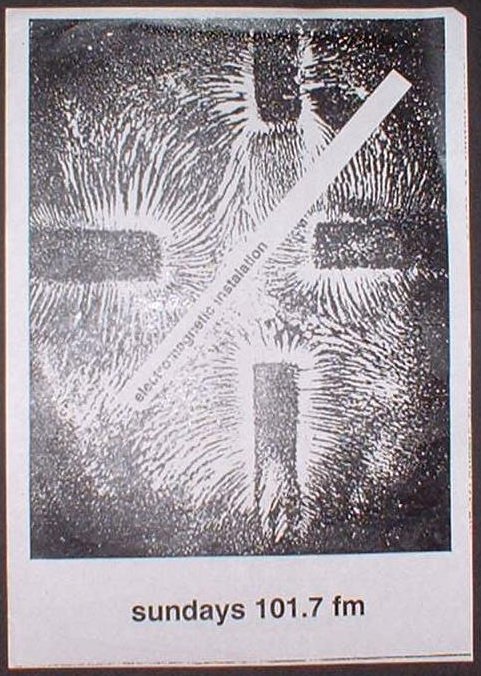
Bristol in the late 80s and early 90s was a dynamic and exciting place to be. Especially if one was creative and also interested in alternative ways of thinking and living. Independent culture was thriving. It was back in the 70s when Bristol’s radical spirit of creative and political autonomy was first forged. Post punk bands such as the Pop Group, Rip Rig & Panic, spread their own influential ethos of being creative and activist as a way of life. Advocating everyday people could be different, be independent thinkers and question the validity of the established norm. This flexible blueprint of being socially conscious in an imaginative way influenced a huge mixture of genres for years to come. Breaking down the borders between the audience and the musicians playing was a legacy handed on down from punk. This includes building your own record label, setting up your own pirate radio station, self publishing and other ventures.
Furtherfield’s first collective (yet unofficial) DIWO experience was at the Watermans Art Centre, London in 1999. We were asked to present a project which reflected the free and liberated spirit of our networked on-line community and its creative culture. The name of the project was called “Pasteups@Watermans Art Centre”, not DIWO. It had all the features of DIWO, such as using email as art, and the traditional postal services (snail mail) as part of its distribtion process. From all over the world people were invited to send images and texts which were then enlarged into a mass of photocopied posters.

On Sunday 10th October 1999 all the hoardings and wall spaces in the streets around the Watermans Art Centre were blitzed with Pasteups. There was no selection of what should be taken out or left in, everything was shown. They were put up by the Furtherfield crew and who ever wished to help out. Some of those whom took part were also local to the area. The people working in the centre reacted as if they were being over taken from a dark external force, and the passing public were expressing a mixture of emotions – enjoyment, surprise, interest, confusion, distaste and annoyance. It challenged the ideal of art having to be a rigid divide and rule of amateur vs professional, using the Internet and the physicalness of the Watermans Art Centre’s building, inside and outside. The streets were used as a shared canvas to fill our collective, imaginative expressions at that time.
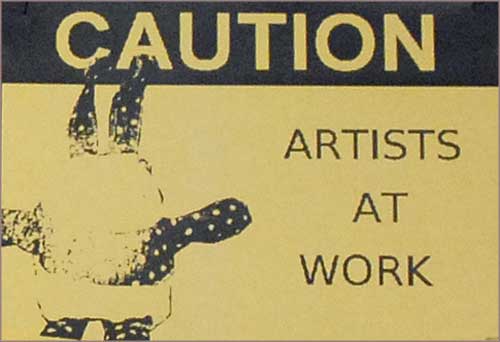
“”… the role of the artist today has to be to push back at existing infrastructures, claim agency and share the tools with others to reclaim, shape and hack these contexts in which culture is created.” [1] (Catlow 2010)
In her study ‘Empire of Dirt: The Aesthetics and Rituals of British Indie Music (Music Culture)’, Dr. Wendy Fonarow [2] investigated the UK’s indie music scene and its culture from the early 1990s to present. Below Fonarow presents the differences between mainstream and independent music culture. Contrasts are mapped out in Lévi-Straussian fashion:
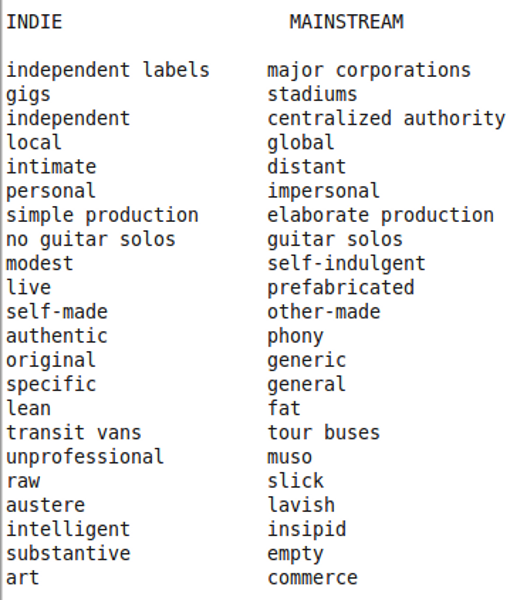
“Indie itself in relation to the mainstream as an opositional force combating the dominant hegemony of modern urban life. Any band that is seen as “chipping away at the facade of of corporate pop homogeny” (Melody Maker, April 1995) is a positive addition to the indie fellowship.”[3] (Fonarow 2006)
There are similar terms above as there is with critical practices in Media Art culture, Free and Open Source culture, activism and hacktivism, and with concepts behind DIWO. Words such as self-made, independent, raw and substantive offer strong relational ties to what we feel ourselves is essential for a thriving, discerning and critically aware process, of an unfettered state of discovering, and how to do things without conforming to top-down protocols, individually or collaboratively.
“To be an artist is to contend with the present, and there are not many other careers that afford the freedom to radically examine life and society. To put it bluntly, if artists are studying and writing more about politics, culture, and education, it’s probably a reflection of the unprecedented dysfunctionality of the societies in which they live.” [4] (Deck 2005)
When considering an art context, critical thinking on the social nuances, social and relational variants introduce possibilities for a deeper understanding of the meaning of a work and its place in the wolrd. Not only in respect of the quality of an artwork in its own right, but it also introduces consideration concerning value. Value comes out of dialogue whilst the work is put into motion, as the process occurs as well as when it reaches its final stage of being seen – it’s birth is always messy, but this process gives us the rich nutriants, the substance.
By recognising resonances that lurk between art and culture and our own connections with these elements; as we make things with others different core values come into play. This is where knowledge of how an artwork and its meaning communicates beyond the artwork itself; to and with others, linking up to the ever changing rhythms dominating society. All this, also depends on the context of how and where a work is seen. An artwork and where it is seen declares the artists’ relationship with other structures, infrastructures and networks, whether this be physical or based on-line. This informs us about the artists’ personal concepts, attitudes and social values. These attributes become part of the work; its story and part of its essence and its reasons for existing in the first place.
Whoever controls our art – controls our connection, relationship and imaginative experience and discourse around it. The frameworks and conditions where art is accessed, seen and discussed is significantly linked to representation and ownership. Socially and culturally, this process of abiding by specific rules and protocols defines who and what is worth consideration and acceptance. For art to be accepted within these ‘traditional’ frameworks a dialogue reflecting its status around a particular type of function kicks into place, it must adhere to certain requirements. Whether it is technological or using traditional art making skills the art itself must in some way conform to specific protocols before it can be allowed into the outer regions of ‘officially’ condoned culture. This process adds merit to the creative venture itself and feeds a systemic demand based around innovation in a competitive marketplace. If an iindividual or an collective does not abide by these dominating rules then they will not be seen in these frameworks. DIWO allows one to venture with many, in playful scenarios of mutual experience and interdependence, freeing up the trappings of ‘officially’ defined protocols and frameworks, governing our behaviours. This does not mean that there are no rules, it merely means that we have a more relationally informed understanding of how to work with others. Structures and aims are decided in different terms mutually.
DIWO is playful re-interpretation and fruition of some of the principles and reasons that Furtherfield was originally founded, back in 96-97. We had experienced as artists in the 80s and well into the 90s, a UK art culture mainly dominated by the marketing strategies of Saatchi and Saatchi. The same company was responsible for the successful promotion of the Conservative Party (and conservative culture) that had led to the election win of the Thatcher government in 1979. We felt that it was time to make a stance against these neoliberalist heavies controlling the art scene and our every day culture. Our aim was to move away from the typically established, sociallly engineered aspects of art culture where false credence was given to a few individuals over many others, based on their personalities alongside their depoliticized artworks.
“Furtherfield’s roots extend back through the resurgence of the national art market in the 1980s, to the angry reactions against Thatcher and Major’s Britain, to the incandescence of France in May 1968, and back again to earlier intercontinental dialogues connecting artists, musicians, writers, and audiences co-creating “intermedial” experiences.” [5] (Da Rimini 2010)
Our move away from this was to create pro-active alternatives, with social hacks, bypassing the marketing myth of the ‘genius’ as a product via the usually distracting diversions, and top-down imposed spectacles based on privilege and hegemony. Recently an article written by John A. Walker on the artdesigncafé web site, disucussed how art culture is still haunted by the power of Charles Saatchi.
“Arguably, as an art collector Charles Saatchi has become a brand in his own right—when he buys art works they and the artists who created them are immediately branded.” [6] (Walker 2010)
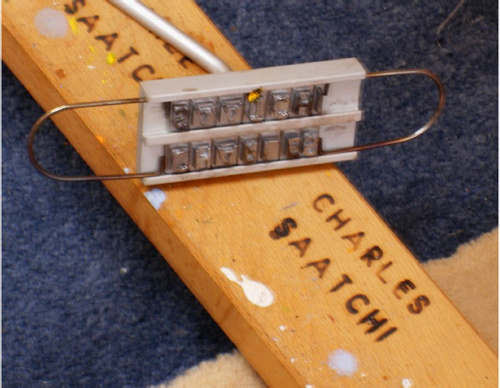
BritArt’s dominance of the late 80s and 90s UK art world dis-empowered the majority of British artists, and Smothered other artistic discourse by fuelling a competitive and divisive attitude for a shrinking public platform for the representation of their own work. Stewart Home proposes that the YBA movement’s evolving presence in art culture fits within the discourse of totalitarian art.
“The cult of the personality is, of course, a central element in all totalitarian art. While both fascism and democracy are variants on the capitalist mode of economic organisation, the former adopts the political orator as its exalted embodiment of the ‘great man,’ while the latter opts for the artist. This distinction is crucial if one is to understand how the yBa is situated within the evolving discourse of totalitarian art.” [7] (Home 1996)
By questioning the myths that dominate our actions we then become more empowered and confident to collaborate with others. We can only rediscover these inner creative kernals by critiquing the infrastructures dominating our behaviours. Many artists have and do conform to mainstream art world rules. This closes down space for a wider dialogue and experience for art practice to expand its possible horizons, beyond a handed down, hermetically sealed set of distant processes. When experimenting with alternative approaches of imaginative engagement a different set of values arrive. Through this we unearth things about ourselves which were already there but were trapped before by the mechanisms and mannerisms of mainstream culture and its dominant values.
DIWO (Do It With Others) is inspired by DIY culture and cultural (or social) hacking. Extending the DIY ethos with a fluid mix of early net art, Fluxus antics, Situationism and tactical media manoeuvres (motivated by curiosity, activism and precision) towards a more collaborative approach. Peers connect, communicate and collaborate, creating controversies, structures and a shared grass roots culture, through both digital online networks and physical environments. Stringly influenced by Mail Art projects of the 60s, 70s and 80s demonstrated by Fluxus artists’ with a common disregard for the distinctions of ‘high’ and ‘low’ art and a disdain for what they saw as the elitist gate-keeping of the ‘high’ art world.
The term DIWO OR D.I.W.O, “Do It With Others” was first used on Furtherfield’s collaborative project ‘Rosalind’ (http://www.furtherfield.org/get-involved/lexicon). An upstart new media art lexicon, born in 2004. DIWO was officially termed here in 2006 (http://www.furtherfield.org/lexicon/diwo)
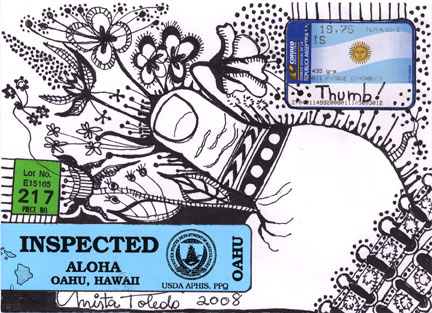
“It is in the use of the postal system, of artists’ stamps and of the rubber stamp that Nouveaux Realisme made the first gestures toward correspondence art and toward mail art.” [8] (Friedman 1995)
Mail Art is a useful way to bypass curatorial restrictions for an imaginative exchange on your own terms. With DIWO projects we’ve used both email and snail mail. Later, we will return to the subject of email art and how it has been used for collective distribution and collaborative art acitivies; but also, how it can act as a remixing tool and an art piece in its own right on-line and in a physical, exhibiting environment.
“[…] many Fluxus works were designed specifically for use in the post and so the true birth of correspondence art can arguably be attributed to Fluxus artists.” [9] (Blah Mail Art Library)
Many consider George Maciunas was to Fluxus, what Guy Debord was to Situationism. Maciunas set up the first Fluxus Festival in Weisbaden in Germany, 1962. In 1963, he wrote the Fluxus Manifesto in 1963 as a fight against traditional and Establishment art movements. In a conversation with Yoko Ono in 1961, they discussed the term and meaning of Fluxus. Showing Ono the word from a large dictionary he pointed to ‘flushing’.
“”Like toilet flushing!”, he said laughing, thinking it was a good name for the movement. “This is the name”, he said. I just shrugged my shoulders in my mind.” [10] (Ono 2008)
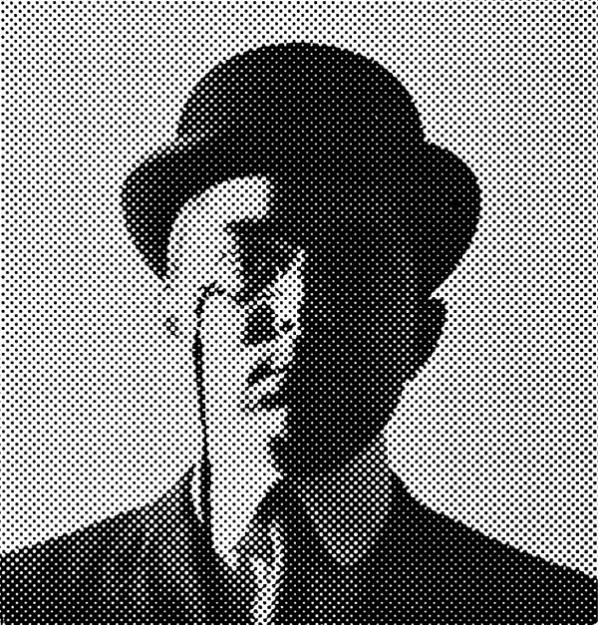
“The purpose of mail art, an activity shared by many artists throughout the world, is to establish an aesthetical communication between artists and common people in every corner of the globe, to divulge their work outside the structures of the art market and outside the traditional venues and institutions: a free communication in which words and signs, texts and colours act like instruments for a direct and immediate interaction.” [11] (Parmesani 1977)
Maciunas’s intentions and ideas are strongly based on creative autonomy. DIWO in the 21st Century explores its own position of (social) grounded reasoning and creative chaos. In contrast to the usual, standardized and bureaucratic implimentations by an increasingly banal, neoliberal elite controlling our art, education, media and economies.
“[…] art has become too narcissistic and self-referential and divorced from social life. I see a new form of participatory art emerging, in which artists engage with communities and their concerns, and explore issues with their added aesthetic concerns” [12] (Bauwens 2010)
“Marshall McLuhan once suggested that ‘art was a distant early warning system that can always tell the old culture what is beginning to happen to it'” [13] (Gere 2002) The infrastructural tendencies that occur when ‘the many’ practice DIWO; informs us we are in a constant process which redefines the role of the individual, and our notions of centralized power and behaviour. This process also presents us with critical questions around the value of art as scarcity. In moving away from our emotional attachment with the socially engineered dependencies based on consumer led forms of scarcity and desire, we then change the defaults. If we change the defaults we change the rules, no longer besieged by top-down defaults and open to more intuitive and relational contexts.
DIWO proposes in its fluid and sensual action of immediacy; situations where anyone can play and initiate collaborative and autonomous art. It is a radical creativity, asking questions through process and peer engagement, loosening infrastructural ties and frameworks as it occurs.
DIWO is a contemporary way of collaborating and exploiting the advantages of living in the Internet age. By drawing on past experiences with pirate radio, historical inspirations from Punk, with its productive move towards independent and grass roots music culture, as well as learning from Fluxus and the Situationists, and peer 2 peer methodologies; we transform our selves into being closer to a more inclusive commons. We transform our relationship with art and with others into a situation of shared legacy and emancipation.

“The network is designed to withstand almost any degree of destruction to individual components without loss of end-to-end communications. Since each computer could be connected to one or more other computers, Baran assumed that any link of the network could fail at any time, and the network therefore had no central control or administration (see the lower scheme).” [14] (Dalakov 2011)
Even though the web and DIWO possess different qualities they are both forms of commons. They both belong to the same digital complexity, and involve us connecting with each other. They are both open systems for human and technological engagement. DIWO rests naturally within these frameworks much like other digital art works or platforms and related behaviours, but possess key differences. If we consider the functions and structures of Facebook, Google, MySpace, itunes and now Delicious, they are all centralized meta-platforms, appropriating as much users as possible to repeatedly return to the same place.
“We see social media further accelerating the McLifestyle, while at the same time presenting itself as a channel to relieve the tension piling up in our comfort prisons.” [15] (Lovink 2012)
These meta-platfroms are closed systems. Not, necessarily closed as in meaning ‘you cannot come in’, but closed to others if you consider their motives and ‘acted out’ values, exploiting human interaction and their uploaded material, and openly ‘given’ data-information. These centralized meta-platforms close choices down through rules of ownership of personal data, as well as introducing more traditional standards of hierarchy, and limits one’s view and potential experience of the Internet.
Richard Barbrook and Andy Cameron saw this curious dichotomy way back in 1995. On one hand we had the dynamic energy of sixties libertarian idealism and then on the other, a powerful hyper-capitalist drive, Barbrook and Cameron termed this contradiction as ‘The Californian Ideology’. “Across the world, the Californian Ideology has been embraced as an optimistic and emancipatory form of technological determinism. Yet, this utopian fantasy of the West Coast depends upon its blindness towards – and dependence on – the social and racial polarisation of the society from which it was born. Despite its radical rhetoric, the Californian Ideology is ultimately pessimistic about real social change.” [16] (Barbrook and Cameron 1995)
Instead of submitting to an imperious process of allowing bland interaction own our behaviours; we propose an engagement where we can be more conscious and in control by exploiting further the real potential of the networks before us.
“We are not going to demand anything. We are not going to ask for anything. We are going to take. We are going to occupy.”[17] (RTS 1997)
Just like Reclaim the Streets which was an anti-car direct action movement seizing roads to prevent cars from being able to access them. Filling up public areas with thousands of bikes and using street parties as part of the political protest. We can loosen the gaze and spectacle of these propriety, meta-platforms and their dominance of our actions with others on the Internet. DIWO, is a way of thinking and acting differently, not an absolutist ‘technologically determined’ factor, but a thing of many things, and leans more towards a kind of social activism going as far back as The Diggers:
“The Diggers [or ‘True Levellers’] were led by William Everard who had served in the New Model Army. As the name implies, the diggers aimed to use the earth to reclaim the freedom that they felt had been lost partly through the Norman Conquest; by seizing the land and owning it ‘in common’ they would challenge what they considered to be the slavery of property. They were opposed to the use of force and believed that they could create a classless society simply through seizing land and holding it in the ‘common good’.” [18] (Fox)
Three elements pull DIWO together as a functioning whole, which can mutute according to a theme, situation or project. These three contemporary forms of (potential) commons mainly include; the ecological – the social – and the networks we use. By appropriating these three ‘possible’ processes of being with others; combined, they introduce and enhance potential for an autonomous and artistic process to thrive, further than the limitations of any single or centralized point of presence. It brings about small societal change, as long as we are conscious of the social nuances needed for a genuine and critically engaged, mutual collaboration.
“Online creation communities could be seen as a sign of reinforcement of the role of civil society and make the space of the public debate more participative. In this regard, the Internet has been seen as a medium capable of fostering new public spheres since it disseminates alternative information and creates alternativ (semi) public spaces for discussion.” [19] (Morell 2009)
In accordance with Mail Art tradition, DIWO began with an open-call to the Netbehaviour email list on 1st February 2007. The exhibition was at our older venue the HTTP Gallery, opening at the beginning of March. Every post to the list until 1st April was considered an artwork – or part of a larger collective artwork for the DIWO project. Participants worked across time zones, geographical and cultural distances with digital images, audio, text, code and software; they worked to create streams of art-data, art-surveillance, instructions and proposals, and in relay to produce threads and mash-ups.
One example of a work which exploited the data-steams of continual flow while over a hundred individuals participated and collaborated in DIWO in 2007, was X-ARN.org (Gregoire Cliquet, Laurent Neyssensas and Yann le Guennec). By using the dynamic exchange of the Netbehaviour email list as reliable exchange of regualr content, the net art group were able to perform their particular and unique processes of interaction, or intervention. It had no specific title, it was literally documenting the list’s networkked behaviour, and there were many of these networked visualizations made. They experimented with the net-specific aspects of DIWO’s mass artistic activity, forming digital mappings of this collected data or data-streams in ‘real-time’, as it all happened.

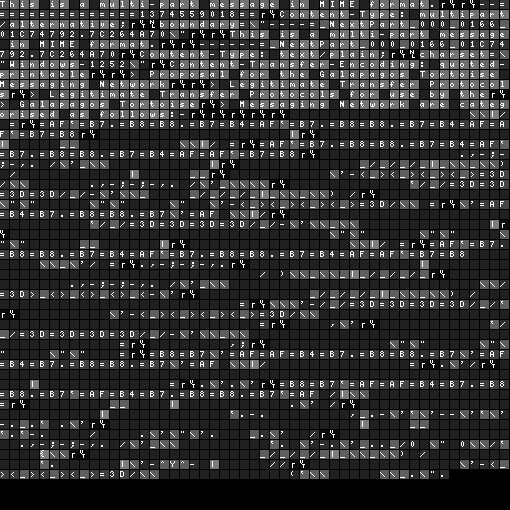
![[ARN / DIWO-Betatests 2007]](http://www.furtherfield.org/wp-content/uploads/2012/05/attachment3.png)
Some also participated in the experimental networked curation of the exhibition, facilitated by web cams, public IRC and VOIP technology. This co-curation event, or Curate With Others (CWO), as it was retroactively named, took place a week before the gallery opening. All subscribers to the NetBehaviour list were invited to contribute to the curation of the exhibition either by viewing the gallery floor plan and posting suggestions to the list or by taking part in the event; attending the gallery or joining the online meeting. Information about how to join the online event was posted to the list. During this event the spirit and philosophy of DIWO E-mail-Art were discussed, the deluge of diverse contributions by about a 100 people were reviewed, plinths, monitors and a drawing machine.
“The ‘Will Work For Food’ happening deals with the desire to find a new definition for labour and the act of working.” [20] (Jeron 2007)
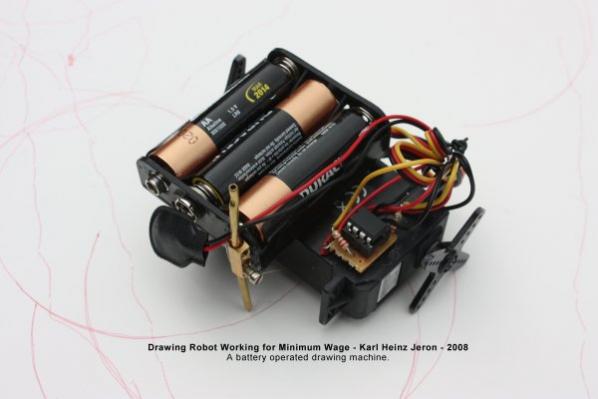
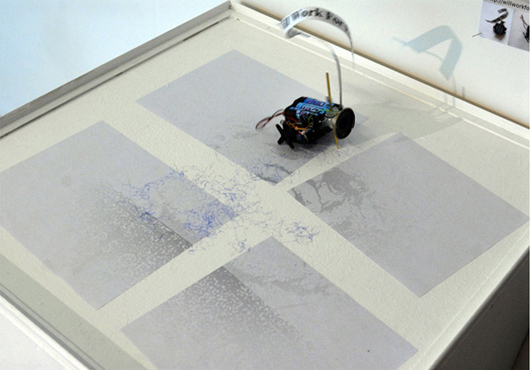
Karl Heinz Jeron’s drawing machine was a vehicle equipped with a ballpen run by rechargable batteries, and when turned on created random drawings. Jeron’s machine was not switched on, unless he received gifts in the post such as chocolates or any other form of economic support. After (thankfully) receiving various contributions in the post the image supplied by Jeron of Karl Marx would gradually be scribbled over.
This section of the Article is an edited version of a collaborative text by Ruth Catlow & Marc Garrett. Originally published on Vague Terrain in 2008. [21]
Present in the flesh were the Furtherfield.org crew and James Morris (regular, esteemed DIWO contributor).
Frederik Lesage manned the Public IRC and, as ‘DIWOchatbod’, who documented the conversation in the gallery for the benefit of those online co-curators who had trouble logging into Skype. Through the afternoon the online event was visited by eight people. The CWO event determined the format of the DIWO exhibition and the Furtherfield.org crew was charged with installing it. So, about approxximately 15 individuals on the day co-curated the setting up of the exhibition. Afterwards we informed everyone on the Netbeahviour list for any last minute details and suggestions and then continued with everything.
(Floorplan of Do It With Others (DIWO) at HTTP-Gallery, London. 2007)
The centerpiece of the exhibition was an e-mailbox containing all submissions; sorted and categorised for visitors to explore and redistribute by clicking ‘Forward Mail’. Streams and Themes displayed images, texts, sounds, code, and movies, primarily by single contributors (human and machine) as well as collections of themed posts or particular kinds of activity). Threads contained series of dialogic emails whose senders were remixing images, movies and code, most often in action and response). Other categories included Proposals and Instructions and Approaches to E-Mail Art.
(DIWO curated emailbox displaying image 3 tampered, posted by Chris Fraser 28/02/07)
Many of the themed folders and subfolders had their corollaries in the physical space of the gallery in the form of wiggly overlapping streams of printed images, pinned to the walls. Threads were represented by scrolls; one post after another in chronological order. A TV ran a video compilation, a sound compilation was played over four speakers, and two installation works were devised especially for the space. Karl Heinz Jeron’s ‘Will Work for Food’ and a print/projection mashup by Thomson and Craighead and Michael Szpakowski.
(Visitor to DIWO E-Mail Art at HTTP Gallery explores the DIWO email box. 2007. Image by Pau Ross)
All categories were liberally interspersed with off-topic discussion, tangents and conversational splurges so one challenge for co-curators was to reveal the currents of meaning, and emerging themes within the torrents of different kinds of data, process and behaviour. Another challenge was find a way to convey the insider’s – that is the sender’s and the recipient’s- experience of the work. These works then were made with a collective recipient in mind; subscribers to the Netbehaviour mailing list. This is a diverse group of people, artists, musicians, poets, thinkers, programmers (ranging from new-comers to old-hands) with varying familiarity with and interest in different aspects of netiquette and the rules of exchange and collaboration. This is reflected in the range of approaches, interactions and content produced. Before DIWO, extensive press releases were posted to different email lists, and online art platforms to join the Netbehaviour list to collaborate on the project.
(Lem Pollocked. By Lem Urtastik 16/2/07 / Created using Jackson Pollock artware by Miletos Manetas)
As with our previous experience of collective media arts ventures such as the first round of NODE.London Season of Media Arts (2006) [21] “we saw that lots of people invested with most enthusiasm in unstructured discourse; meandering and complex. This gave all participants a partial but meaningful view of the diverse contexts in which we worked, allowing us to make decisions about what our contribution could be. These many-to-many deep processes are never efficient but still invaluable to us in a culture where the pressures are always to be newer, faster, better-oiled, less philosophical, less human (ie less messy and complicated), more productive in the service of strategic overview.” (Garrett and Catlow) [ibid]
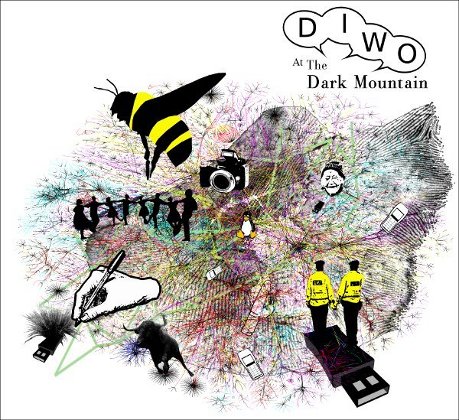
The next DIWO took place in 2009. It was called ‘Do It With Others (DIWO) at the Dark Mountain’. It was a collaboration between the then, newly formed ‘The Dark Mountain Project’, [22] Furtherfield and those participating in DIWO. A Dark Mountain manifesto grew out of a conversation between Paul Kingsnorth and Douglad Hine. It was an invitation to a new cultural response to the converging crises of climate change, resource scarcity and economic instability.
Paul Kingsnorth, in a letter to George Monbiot in the Guardian Newspaper which was also (openly) published by Monbiot said “As for saving the planet – what are we really trying to save, as we scrabble around planting turbines on mountains and shouting at ministers, is not the planet but our attachment to the western material culture, which we cannot imagine living without.” [23] The Dark Mountain Project wrote their Manifesto ‘UNCIVILISATION: the dark mountain manifesto’ “Old gods are rearing their heads, and old answers: revolution, war, ethnic strife. Politics as we have known it totters, like the machine it was built to sustain. In its place could easily arise something more elemental, with a dark heart.” [24] (DMP 2009)
The Dark Mountain Project has been viewed by many as apocalyptic, yet it also has grown in popularity these last few years. When discussing the project Hine says “Rather than treating these as distinct problems in need of technical solutions, we argued that they should be treated as symptoms of a deeper social and cultural crisis, a failure of the stories we have been telling ourselves for generations.” The Dark Mountain Project text was “addressed to other writers, and there is still a vein of Dark Mountain which is about finding new ways of writing, adequate to the times we are living through.” [25] (Hine 2009)
Kingsnorth and Hine both come from a literary background. Asking people to get involved in the project was a big ask.
DIWO E-Mail Art contributors in 2007 included: //indira, [–lo_y-], aabrahams, Alan Sondheim, Alexandra Reill, Allan Revich, Ana Valdes, Andre SC, Andrej Tisma, Ant Scott, arc.xolotl ARN, Aurlea, biodollsmouse, Bjorn Eriksson, Bjorn Magnhildoen, Blackmail, bob catchpole, bobig, brian@netart.org.uy, Camille Baker, Chris Fraser, Christphe Bruno, Clive McCarthy, cont3xt.net, Corrado Morgana, Daniel C. Boyer, dave miller, Denisa Kera, Dion Laurent, Eric Dymond, Edward Picot, Frederick Lesage, Geert Dekkers, Giles Askham, Giselle Beiguelman, Gregorios Pharmakis, Hans Bernhard, Helen Varley Jamieson, Hight, James Morris, janedapain, Jon Thomson, Jonathon Keats, Kanarinka, Kate Southworth, Lance W, Lauren A Wright, lem urtastic, Lewis LaCook, Lisa, Lizzie Hughes, Lorna Collins, Lucille C, Marc Garrett, Marc Cooley, Maria Chatzichristodoulou, mez breeze, Michael Szpakowski, Msdm, Neil Jenkins, patrick lichty, Paul Trevor, Regina Pinto, Riccardo Mantelli, Richard Osborne, rich white, Rosangela Aparecide da conceicao, Ruth Catlow, Sachiko Hayashi, Severn, Sim Gishel, Spread, Susana Mendes Silva, Taylor Nuttall, The Subversive Artist, Turbulence, Wolfgang, xavier cahen, zea.
Featured image: Landscape by Antoinette J. Citizen (2008-2010)
The Italian plumber Mario appeared for the first time in 1981 as a character in the videogame Donkey Kong, created by the famous Japanese game developer Shigeru Miyamoto. Two years later, Mario became the main character of his own game, and his fame grew exponentially. Approximately 200 different videogames have been produced where Mario has the lead role. In contemporary art Mario is also a popular personality and Cory Arcangel is the artist who has done the most famous works based on the videogame.
Super Mario Cloud is probably the most famous of Archangels’ Mario works. It was created in 2002 and was exhibited at the Whitney Biennial 2004. In Super Mario Cloud Arcangel has hacked and changed an old Nintenedo game cartridge so that the only thing that remains of the original game are the little white fluffy clouds that slowly scrolls by on the clear blue sky. Since Arcangel has taken away all of the game elements and interaction you can refer to it as an anti-game. You can also interpret the work as a renewal and a commentary on the art historical genre cloud painting that became popular during the 1800s, when the science of cloud formations and their appearance emerged.
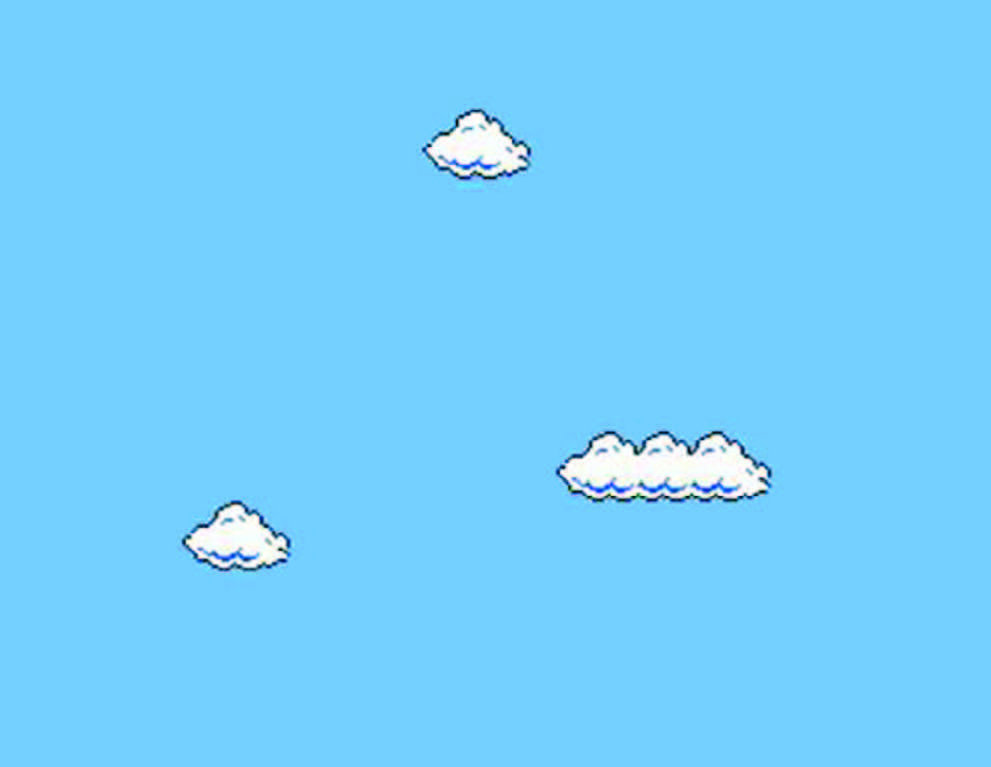
Super Mario Movie is a 15 minute video which Arcangel did together with Paper Rad in 2005. Again, this is a hacked cartridge of a Nintendo, and in the opening scene, you can read the following text:
“As a video game grows old its content and internal logic deteriorate. For a character caught in this breakdown problems affect every area of life.”
For Mario, it means that when his world grows older its graphic content and logic breaks down until he finds himself trapped in a nightmare where he falls head over heels down the screen in a changing fragmented world of psychedelic colours in which, among other things, a giant Mario head pops up. What Arcangel describes is the natural degradation process that eventually affects all physical storage devices from floppy disks, CDs to hard drives. When the stored information is getting corrupt by age it results in misreading with strange and illogical effects on the screen. It’s not just we human that are having problems when our cells and DNA are getting corrupt by age, even game characters could experience strange behaviors and diseases when their data ages.
Video: Naptime by Cori Arcangel (2002)
In the video Naptime (2002) we find Mario sleeping in his bed and above him is a dream cloud that consist of a psychedelic stream of characters and colours – the same effect which you can experience when you try to run old games that have become damaged or are using a computer with a broken graphic card. Just like in Super Mario Movie it seems like a nightmare is chasing Mario in Naptime. It is a world of corrupt code and information in which the game logic has broken down, a world that behaves as if it was infected by a nasty computer virus.
Video: SuperMario Sleeping by Miltos Manetas (1987)
The artist Miltos Manetas has also created a video with a sleeping Mario. In the three-minute long film Super Mario Sleeping (1987) we see how Mario gets tired and lies down and sleeps in the grass. Just as in Arcangel artwork the video is describing an anti-game. All the interactivity and stress in the game are removed and instead we experience a calm and meditative atmosphere. Philip K. Dick novel Do Androids Dream of Electric Sheep? (1968) comes to my mind. What is it that distinguishes a human from an android or a character in a video game? Can characters in computer games dream and, in that case, what are they dreaming of when we are not playing them?
It is now not only the character Mario who is interesting for artists, but also the objects in the game. The Australian artist Antoinette J. Citizen created in 2008 the interactive installation Super Mario Brothers Level 1-1 in which she transformed an art gallery into a Super Mario game. She painted the walls with different levels of the game and installed interactive boxes with question marks and bricks. The visitor could touched the boxes which then produced different sounds from the game. Citizen’s works are, like many other Game Art works, an example of how artists transfer the virtual game world into the real exhibition space.
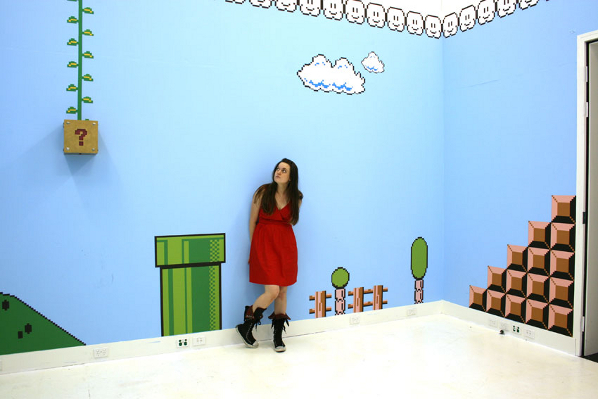
Mario is probably the most famous character in the videogame world. The question is if he is not as famous as Jesus? The Polish artist Kordian Lewandowski plays with the idea in the work Game Over. He has created a copy of Michelangelo’s famous Pieta sculpture but instead of a dying Christ in the arms of the Virgin Mary, we see Mario lying lifeless in the arms of Princess Peach. It seems that videogames with their own iconology and stories about the constant struggle between good and evil, in some degree, have taken over the role of religion when it comes to creating references and cultural contexts for people.
http://www.coryarcangel.com/things-i-made/supermarioclouds/
http://www.coryarcangel.com/things-i-made/supermariomovie/
http://www.artforum.com/video/mode=large&id=25370
http://www.supermariosleeping.com/
http://antoinettejcitizen.com/works/landscape/
http://wielkiartysta.pl/content/index.html
The four day event at the Showroom collated a series of practitioners, artists, theorists and historians, to examine, test and explore ideas stemming from cybernetics and information theory and more specifically the idea of feedback.
Described as an ‘experimental cross-disciplinary research project’, Signal : Noise was a fusion of talks, lectures, performances, screenings and debates that made diverse contemporary evaluations of the legacy of cybernetics using an inter-disciplinary approach. It tackled subjects as seemingly diverse as economic theory; urbanism and the arrival of the motor car in London; game theory; linguistics; media-performance art from the 1970’s; and the problematic legacies of the recent UK arts funding system on artists – all viewed using the concepts and terminologies of cybernetics and systems.
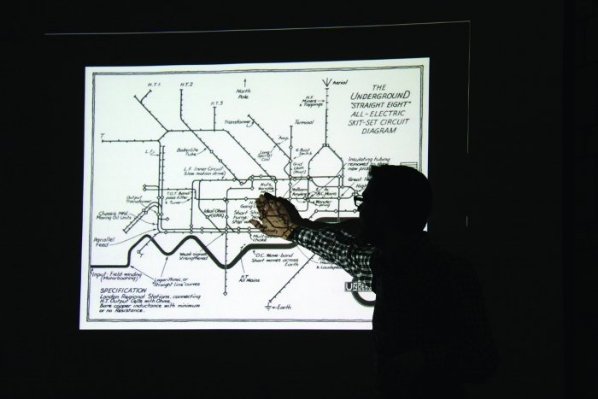
Signal : Noise, in part, played out like a small conference, mainly set in The Showroom Gallery space with one wall covered with a network diagram drawing by Stephen Willats, and fly posted theoretical systems diagrams from his recently re-published 1973 book, or maybe manual, ‘The Artist as Instigator of Changes in Social Cognition and Behaviour’.
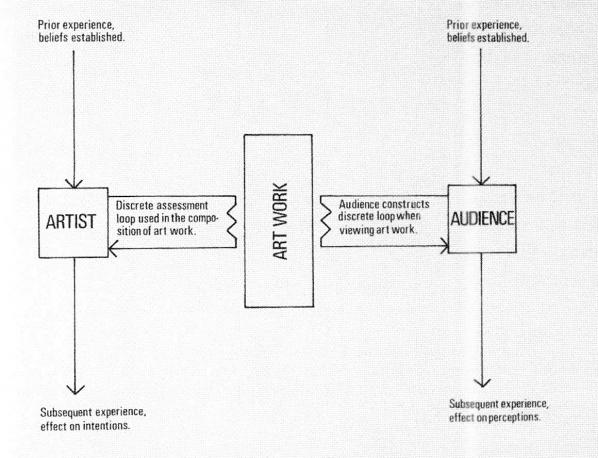
This visual reference served as a backdrop to the proceedings and served as an on going reminder that despite the deep theoretical and historical base being presented and discussed in its many forms, Signal : Noise was ultimately attempting to re ignite debates, and help reset the ideas of cybernetics and systems into a contemporary context of practical application. Willats’ book describes his process as an ‘investigation by the artist into the processes, procedures and models’ of the ‘Art Environment’ using ‘cybernetics as a research tool’.
The first night introductory presentations by Charlie Gere and Steve Rushton provided an overview of many ideas explored throughout the weekend. Artist and writer Steve Rushton on ‘How Media Masters Reality’ used an array of examples, from conceptual and media architecture group Ant Farm using pioneering ideas of investigating media feedback, through to the 500 millions votes (!) on US TV programme American Idol; the latter an example of how contemporary applications of media feedback loops are now often conceptually embedded into the core of television productions, and in turn, are now part of the audiences expectations and involvement.
Ant Farm’s 1975 work ‘The Eternal Frame’, screened later during the weekend, along with Gary Hill’s Why Do Things Always Get in a Muddle (Come on Petunia), based on Gregory Bateson’s Metalogues.
Ant Farm’s 1975 work ‘The Eternal Frame’, screened later during the weekend, was their carefully staged, somewhat trashy live ‘re enactment’ of the 8mm film footage of the Kennedy assassination, complete with a drag version of Jackie Kennedy and sunglass wearing suited security. This film sequence is familiar today, but in 1975 it had yet to reach the public domain. Working to a tightly choreographed moment derived from a bootleg of the 29 seconds of 8mm film, Ant Farm’s grotesque mimicry of the assassination was performed as an ongoing loop, complete with car driving around the block (interestingly, the random people watching in the street in 1975 took photographs like they were at a theme park).
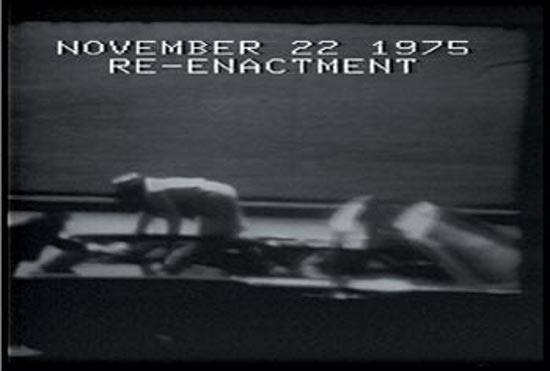

Despite being conceived in the mid ‘70s media environment of portable video and cassettes, the documentation of Ant Farm’s performance resonated with something surprisingly familiar and contemporary in our era of the internet, social media and rolling 24 hour news, and what Rushton termed our “society of self performance”.
Rushton’s historical threads from the origins of Cybernetics and to the Whole Earth Catalogue and the WELL served as a excellent base for the oncoming proceedings of the weekend, and showed that the arrival of the contemporary mass information network in the form of the internet, has habituated it’s millions of users into a kind of cybernetic practice based on input, observation, control, intervention, response, feedback, and adaptation but without necessarily using or being aware of its lexicon.
Nearby, in the Cockpit Theatre, was ‘Closed Circuit’ a performative work by Rod Dickinson (along with Rushton), which consisted of two actors staged and dressed, in a precise duplication of a set for political announcements; wooden lecterns, curtained background, complete with an array of flags – but all carefully neutralized by the removal of logos and national flags identities into plain white.
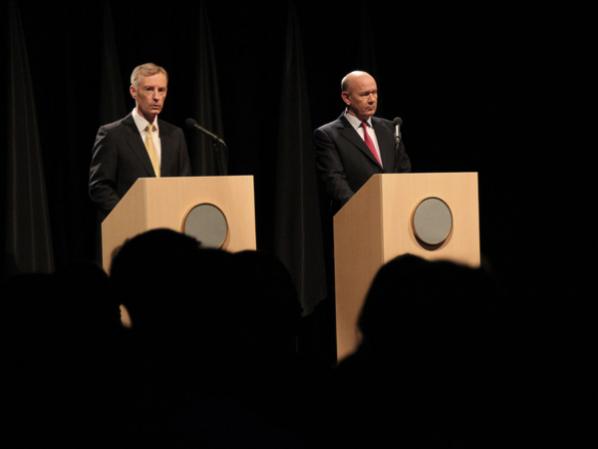
What followed was a series of political speeches utilizing the familiar language and tone of grandeur and crisis, delivered by the actors in the style of a world leader address. What they delivered, was a carefully sequenced remixed script derived from political speeches over the past 50 years; Margaret Thatcher; Richard Nixon; Ronald Reagan; Tony Blair; Yasser Arafat and others. All the details from each specific event they were referring to had been carefully edited out. The only way to differentiate one world leader, country or event from another, were the large projected auto cues for the actors, situated behind the audience at the rear of the theatre. Each one gave the full scrolling speech text and also the year and original context for each leaders’ delivery. Looking towards the stage, it sounded like a single coherent speech, but eluding any specific meaning, isolating the language of threat and authoritarian political control, leaving us just the husk of political presentation and the transparency of the format itself.
Ideas explored in Stephen Willats’ network drawing were expanded further during his talk in the final morning session of Signal : Noise, where he gave a refreshing clarion call to abandon ‘last century thinking’ during his prescient and timely discussion. His seminal works have persistently and methodically challenged the process, structure and meaning of art making and display. Willats made his earliest system diagrams in the late 1950’s, and was the first artist to make the artwork itself a map of communication. But maybe it is this century, rather than our last, that will connect with his provocations to the hierarchical, highly codified, object obsessed ‘Art Environment’, as he terms it, to see that ‘object based thinking is still a hangover from last century attitudes’.
Willats was an early reference for emerging net art and media art in the mid 90’s, with artists then clutching for any art historical roots that gave the field of networked and computer based practice some practical grounding.
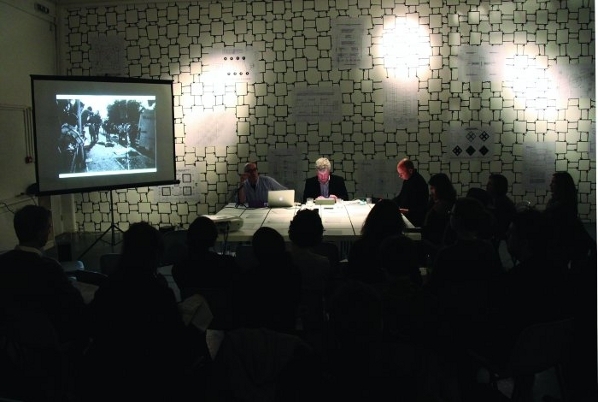
This in-conversation with Emily Pethick surveyed his own personal development and immersion in Cybernetics in its differing stages, a short history lesson, moving from Norbert Weiner to Gregory Bateson and Gordon Pask, but always resolutely en route to the practical issues in the present and what Willats defines as the artist as an ‘instigator of transformation’.
In parallel to Willats, was a presentation and discussion hosted by Emma Smith and Sophie Hope which began to interrogate the legacy of a the New Labour arts commissioning process. It discussed how the criteria for successful funding was intrinsically linked to a social agenda, audience and location set by government policy. Discussions followed about how the arts commissioning process may turn out to have skewed a generation of artists practice, as they slowly lost control of their own output, became tagged with being an ‘artist facilitator’, and began conceiving works to fit in with the criteria of funding bodies, with each funder slowly extending their own prospective reaches. All this supported by an immense drive to build ‘Cultural Industries’ into mechanisms for regeneration.
Seeing this placed against Willats, whose ongoing practice could initially seem in tune with the past decades cultural policies and its overtly prescribed socially engaged agenda, in fact served to show how contrasting, distinct and rich his rigourous thoughtful approach is by comparison.
All this made for a timely discussion. With the approaching withdrawal and decimation of arts funding in the UK, Signal : Noise could prove to be a prescient event. With presentations, workshops and panels by Stuart Bailey and David Reinfurt of Dexter Sinister, Charlie Gere, Matthew Fuller, Marina Vishmidt and others, the interdisciplinary approach of Signal : Noise worked well despite its fairly dense timetable.
Using the gallery as a discursive space, with theorists and writers set within context of practice, is a good base for the next event in this on going series. What it maybe didn’t allow for, which is easily rectified, is a more unpredictable agenda, and more intervention by the ‘audience’. The whole event could function more as a real feedback working system, an adaptable structure that potentially allows for input from its participants (both presenters and audience) letting things move in unexpected directions both on line and offline, leaving a physicalised network as a residue after the event. With the decision to include food and beer in the ticket price (great dumplings, fresh vegetables and miso soup), there is potential here to expand this type of event even further.
With the on coming cultural landscape in the UK moving into un-chartered territory, it is potentially events like Signal : Noise which might begin to unearth and test new ideas and ignite debate within a less rigid format than a ‘curated’ show. In the future this type of event may even re-claim the word ‘radicalise’ from its current narrow, negative media usage, and re-purpose it for artists who decide to reject art market values, in favour of a exploring new ways of working within the emerging (and significantly less funded) ‘Art Environment’.
Signal : Noise. The project was led by Steve Rushton, Dexter Sinister (David Reinfurt and Stuart Bailey), Marina Vishmidt, Rod Dickinson and Emily Pethick. http://www.theshowroom.org/research.html?id=161&mi=254
The Artist as an Instigator of Changes in Social Cognition and Behaviour. 1973. Stephen Willats. http://www.occasionalpapers.org/?page_id=825
Closed Circuit, Rod Dickinson in collaboration with Steve Rushton.
http://www.roddickinson.net/pages/closedcircuit/project-synopsis.php
Dr Charlie Gere. Reader in New Media Research. Department: Lancaster Institute for the Contemporary Arts. http://www.lancs.ac.uk/fass/faculty/profiles/charlie-gere
ANT FARM. ART/ARCHTECTURE/MEDIA [1968-1978]. http://artsites.ucsc.edu/faculty/lord/AntFarm.html
The Eternal Frame by T.R. Uthco and Ant Farm: Doug Hall, Chip Lord, Doug Michels, Jody Procter. 1975, 23:50 min, b&w and color, sound. http://arttorrents.blogspot.com/2008/02/ant-farm-eternal-frame-1976.html
Emma Smith. Social practice that is both research and production based and responds to site-specific issues. http://www.emma-smith.com/www.emma-smith.com/Homeindex.ext.html
Sophie Hope’s work inspects the uncertain relationships between art and society. http://www.welcomebb.org.uk/aboutSophie.html
In the second part of classic videogames that have inspired contemporary artists, we take a closer look at a game that the Cubists probably would have worshiped. Tetris was created in 1984 and then released officially in 1985 by the Russian programmer Alexey Pajitnov. In Tetris you have to move and rotate seven different combinations of blocks as they fall into a well. The blocks are called tetrominos and are made of four squares. The goal is to fit the different geometric shapes so that as little empty space as possible remains in the bottom of the well. Tetris is a puzzle game for people who like compact living, and who see it as a sport to pack economically to the holiday.
In contemporary art you can find three main approaches how artists have used Tetris. The Swedish artist Michael Johansson is a good example of the first approach. He has used the basic idea of Tetris to stack objects with different colors and shape. Johansson works with site-specific installations, in which he collects and stacks objects from the near surroundings in perfect symmetry with no spaces. The installations are called Tetris, which is fitting since they are strongly reminiscent of the game.
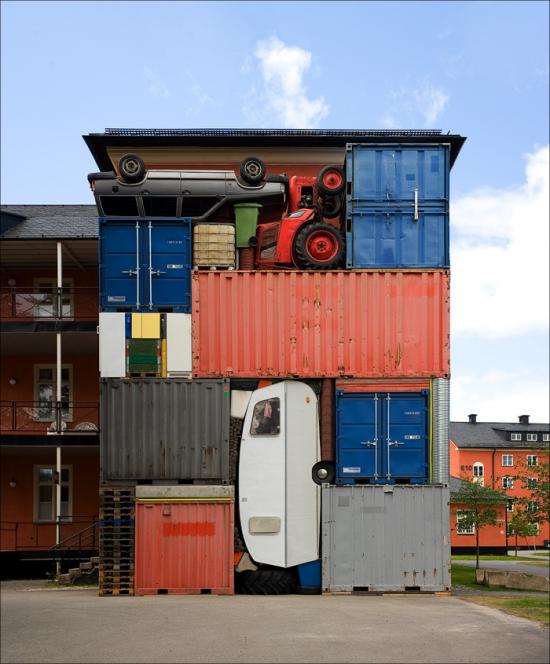
“For me creating works by stacking and organizing ordinary objects is very much about putting things we all recognize from a certain situation into a new context, and by this altering their meaning. And I think for me the most fascinating thing with the Tetris-effect is the fusion of two different worlds, that something you recognize from the world of the videogame merges into the real life as well, and makes you step out from your daily routine and look at things in a different way.” says Johansson in an interview at Gamescenes.org
Like many other classical videogames, Tetris has been used a lot in public spaces as in graffiti, mosaics and posters on facades and in subways etc. In Sydney, Australia, artists Ella Barclay, Adrianne Tasker, Ben Backhouse and Kelly Robson in 2008 at an exhibition at Gaffa Gallery created an installation where they placed giant illuminated Tetris Blocks in a narrow alley. It looked exactly as if the blocks had fallen from the sky, but the alley had been too narrow so the blocks were stuck halfway down.
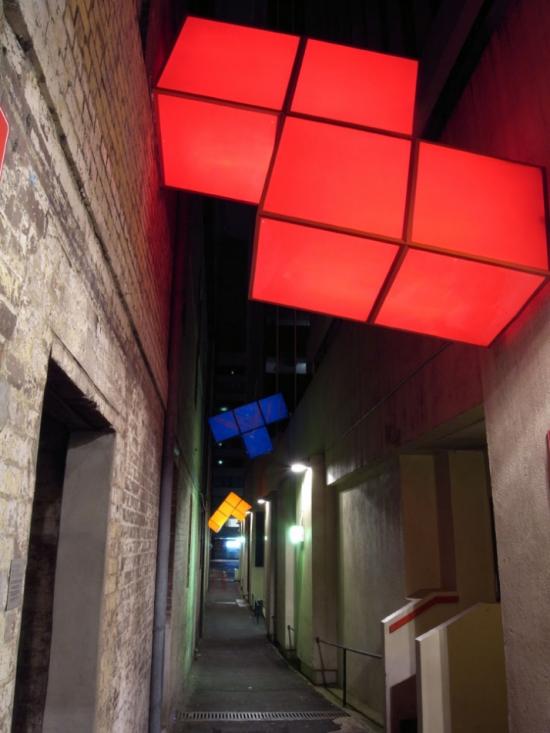
The second approach is to move Tetris out from the exhibition room into public spaces and sometimes also create interactive and social art. The artist group Blinkenlights, who are known for transforming large skyscrapers into interactive screens, on various occasions making it possible for the passing public by to play Pong or Tetris on a skyscraper using a mobile phone. In 2002 they made the installation Arcade, which turned one of the skyscrapers in the Bibliotheque Nationale de France in Paris to a giant screen showing various animations, where a passersby could also play arcade games like Tetris.
The artist group Lummo (Carles Gutierrez, Javier Lloret, Mar Canet & JordiPuig) created in Madrid in early 2010, a Tetris game in which four people have to cooperate to play it. The first step for the participations was to create the Tetris blocks and after that they had to work together to place on right position in the well which was projected on a wall. In Both cases, Blinkenlights and Lummo are creating public meeting places with social interaction where the videogame is used as an interface.
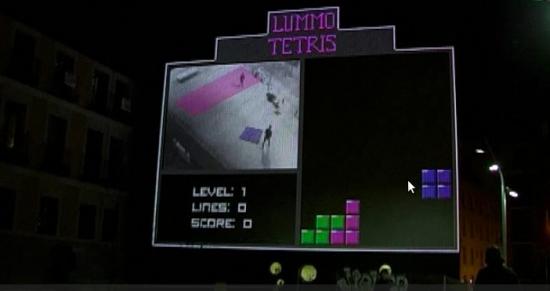
The third approach is changing the game itself and creates new versions of the game which discuss the game idea. The artist group version [url=http://www.tetris1d.org/]1d Tetris[/url], is a one-dimensional Tetris where the blocks consist of four vertical squares falling into a well that is just one block wide. Since the blocks always fill the well the players do not have to do anything to score points. The basic idea of the falling blocks still remains in the game, but in a one-dimensional world there is no longer any difficulty, the game is reduced to a very monotonous and predictable puzzle game.
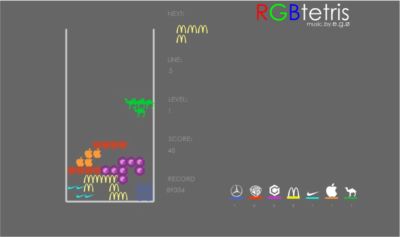
In First Person Tetris the artist David Kraftsow combines the perspective from the popular first person shooter genre (used in war and action games) with the ordinary puzzle game. In Kraftsows variant you see the game from a first person perspective so when you spin the blocks, it is not the individual blocks that are spinning around but instead the whole screen. Just by using a new perspective in the game has Kraftsow created a whole new experience of Tetris. Mauro Ceolin, who has spent many years focusing on the modern emblems on the Internet. In works such as RGBTetris and RGBInvaders he replaces the game’s graphics with contemporary icons and logos. In RGBTetris the blocks that fall down the well are exchanged with logos from Camel, McDonalds, Nike and Mercedes.
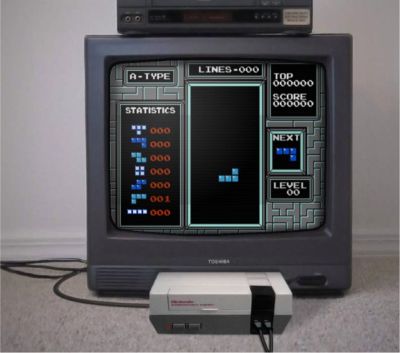
The most interesting and most independent among the playable Tetris versions that I have found are made by the Swedish artist Ida Roden. In Composition Grid she has combined her interest in drawing with Tetris. The player can play a game and in the same time create a unique drawing by rotating and changing one of the 216 different creatures that Roden has created, with the Tetris blocks as model. The player can then choose to print out their own game plan with the artist’s signature, and in that way have a unique work of art in there possession.
Tetris, this two-dimensional version of Rubik’s Cube, seems to create a lot of room for artistic experimentation. It just needs some simple changes, or new perspectives, to create a new and interesting interpretations of the game.
Videogame appropriation in contemporary art: Pong. Part 1 by Mathias Jansson.
Some of these new Tetris games can be found at these addresses:
www.rgbproject.com/RGBtetris/RGBtetris.swf
www.tetris1d.org
www.firstpersontetris.com
www.idaroden.com/composition.html
What is an experiment? I get the sense that many of monochrom’s projects seek to interface with the world (ahh, but what world might that be?) In a sense, I am curious about how you imagine the field, what objects you see upon it, what things call themselves objects but are perhaps only specters? How can non-existent artists save non-existent countries?
Yes, we love experiments. And we approach them like committing a crime: very, very carefully. Still, we know that there’s no perfect crime and we are going to make some mistakes. The main problem with our artistic and activist work is, and that might sound strange: subversion.
Only thirty years ago Western societies were still governed along the principles of the “disciplinary society”. The institutions of a disciplinary society are founded mainly on two devices that keep its subordinates where they are: control and punishment. Both are certainly effective, yet they produce at least an inner resistance, as well as the possibility to avoid either. It’s hard to monitor in absolute terms, and there are always ways of avoiding, if not “hacking” and ridiculing these mechanisms of control. Loop-holes will be identified and used.
The disciplinary society was one that created refractoriness; it revealed hierarchies and blatantly opposing classes of rulers and the ruled. These small acts of individual resistance also instigate models of theoretic and actual resistance on a grander scale.

The society of control has however shifted this device and transplanted it into the subjects themselves. As soon as control is collectively internalized, when control is part of the psychological apparatus and of thought, then we can speak of control in absolute terms. Not much can be done anymore, as no one is independent from, or outside of, control any longer.
We have to be aware of this change and have to analyze and adjust our attacking strategies. Companies like Nike already use Graffiti as a standard variety in their marketing campaigns and the first people who read Naomi Klein’s No Logo were marketing gurus who wanted to know what they shouldn’t do. We certainly can change the political economics of a society. And you can quote me on that. But we have to be precise about it. Just playing around might only make our actions end up as a funny 15-seconds-clip on CNN, and that would be useless. We have to understand cognitive capitalism or we will just be going round and round in the same old circles, as the history of guerrilla communication clearly shows.
How can we subvert a system that actually wants you to subvert it? You can only experiment. And fail.
Well, since beginnings are first (except of course when they aren’t) it would be interesting to hear a bit about the inception of monochrom back in 1993.
I was always interested in obscure crap, even as a kid. I loved science fact (Carl Sagan is still my only media idol) and science fiction, especially John Brunner and William Gibson. And I was always interested in the political dimension of near-future sci-fi. It’s hard to imagine, but I became a punk and antifascist because I devoured cyberpunk novels and watched stuff like Max Headroom. It was great dreaming of a jack in the back of your head, but the corpocratic, doomed world was nothing that I wanted to really happen. I joined the FidoNet data network when I was thirteen or fourteen, around 1988 or 1989. It was a wonderful way to get in contact with weirdos from all over the planet, collecting info and interesting mailing list threads, and slowly but surely my wish to start a publication grew. So monochrom started in the early 1990s as a print fanzine about cyber-topics, politics, bizarre art and covert culture.
What were the circumstances or impetus for Monochrom’s formation? How do you find the world around monochrom has changed since you began?
There was some stuff in the US of A, like Mondo2000… but it was all too hippie-ish, too liberal, indulging in what Richard Barbrook and Andy Cameron later called the “Californian Ideology”. I wanted to share and propagate a leftist European perspective. As a member of several bulletin board systems I sent out mails to a couple of message boards, looking for collaborators, and Franky Ablinger replied in only two hours. And so the monochrom group, or better, “the monochrom culture,” was born. We published a couple of issues, low circulation, and – as the name suggests – we were barely able to finance the black and white xeroxes. But we kept working, creating our first internet site in early 1994.
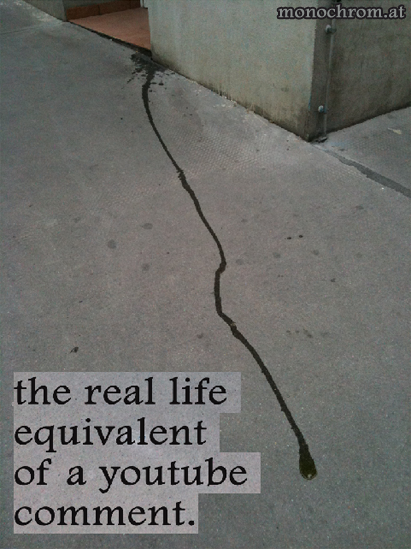
In 1995 we decided that we didn’t want to constrain ourselves to just one media format (the “fanzine”). We knew that we wanted to create statements, create viral information. So a quest for the best “Weapon of Mass Distribution” started, a search for the best transportation mode for a certain politics of philosophical ideas. This was the Cambrian Explosion of monochrom. We wanted to experiment, try stuff, find new forms of telling our stories. But, to be clear, it was (and still is) not about keeping the pace, of staying up-to-date, or (even worse) staying “fresh”. The emergence of new media (and therefore artistic) formats is certainly interesting. But etching information into copper plates is just as exciting. We think that the perpetual return of ‘the new’, to cite Walter Benjamin, is nothing to write home about – except perhaps for the slave-drivers in the fashion industry. We’ve never been interested in the new just in itself, but in the accidental occurrence. In the moment where things don’t tally, where productive confusion arises. That’s why in the final analysis, although we’ve laughed a lot with Stewart Home, we even reject the meta-criticism of innovation-fixation articulated in ‘neoism’. The new sorts itself out when it lands in the museum. Finito.
Some guy once called us ‘context hackers’ because we carefully choose the environment we want to work in and then try to short-circuit it. Some projects definitely work better as a short film or installation or puppet theatre or robot or performance, some should simply be presented as ASCII files … and some are the right stuff for a musical. It just depends.
What happened to the fanzine?
Well, it’s unbelievable, but we still publish it, but not on a regular basis. We decided to switch to a “phatzine format” or call it a “magazine object”. It’s huge. The last one was released in March 2010… it’s #26-34, an accumulation of 500 pages and 2 kilograms. It can break your toe if you drop it! It’s still a good mix of science, DIY, theory, cultural studies and the archeology of pop culture in everyday life. With a great deal of forced discontinuity, a cohesive potpourri of digital and analog covert culture is pressed between the covers. We try to offer an un-nostalgic amalgam of 125 years of Western counterculture – locked, aimed and ready to fire at the present. Like a Sears catalog of subjective and objective irreconcilability – the Godzilla version of the conventional coffee table book.

What are your thoughts on contemporary zoology?
I always loved the grand dichotomies of life. Dogs and cats. Cats and mice. Like Tom and Jerry. But as someone who grew up in Central Europe I never understood how a mouse can live inside a wall. Walls are made of bricks! They are not hollow. Way later I came to understand when I learned that US-American houses are just made of wood, and their walls are really hollow.
Have you ever been walking down the street, mobile phone in hand, and thought of throwing it on the cement, giving it a few good dancing stomps and darting off?
Yes. Even better. We did a workshop called “Experience the Experience of Catapulting Wireless Devices”. The catapult is one of the oldest machines in the history of technology. It is no coincidence that we instigated a creative return. The knife edge of technology hype is sharp, most of all on the West Coast of the United States. Thus we initiated a competition. We invited interested persons to design and build a catapult capable of hurling a cell phone or a PDA unit the greatest possible distance. In order to ensure that no participant had any unfair advantage, we provided a specifications list regarding materials (e.g. metal) that were not to be used and other limitations (e.g. size and weight). And we only tolerated WIRED Magazines as counterweights. That was fitting.
Were you in Berlin when the wall was taken down?
I was asleep, at home. But I always wonder what the official web site of the GDR would look like if they were still around in 2010. Would they use Flash? Or HTML5?
Fanta or Coke?
Fanta originated when a trading ban was placed on Nazi Germany by the Allies during World War II. Coca-Cola GmbH, therefore was not able to import the syrup needed to produce Coca-Cola in Germany. As a result the company decided to create a new product for the Nazi market, using only ingredients available in Germany at the time, including whey and (yummy) pomace. They called it Fanta. So I guess, what’s the difference?
Read part 1 of this interview:
http://www.furtherfield.org/interviews/interview-johannes-grenzfurthner-monochrom-part-1
Read part 2 of this interview:
http://www.furtherfield.org/features/interviews/interview-johannes-grenzfurthner-monochrom-part-2
Helen Varley Jamieson and Paula Crutchlow will be working as Artists in Residence at HTTP, Furtherfield’s Gallery and lab space in July 2010. During this residency Helen and Paula will work on their make-shift project.
Events related to this residency:
make-shift presentation by the artists at HTTP Gallery, 22 July 2010.
More information about this work in progress presentation.
“make-shift is an intimate and participatory performance event that explores the fragile connectivity of human and ecological relationships. Part recital, part discursive salon the performance uses online audio-visual conferencing, chat and performance tools to connect two ordinary living-rooms and their audiences across geographical and cultural distance.”
http://make-shift.net/
Helen Varley Jamieson is a writer, theatre practitioner and digital artist from New Zealand. In 2008 she completed a Master of Arts (research) at Queensland University of Technology (Australia) investigating her practice of cyberformance – live performance on the internet – which she has been developing for over a decade. She is a founding member of the globally-dispersed cyberformance troupe Avatar Body Collision, and the project manager of UpStage, an open source web-based platform for cyberformance. Using UpStage, she has co-curated online festivals involving artists and audiences around the world. Helen is also the “web queen” of the Magdalena Project, an international network of women in contemporary theatre.
www.creative-catalyst.com
Paula Crutchlow lives with her family in Exeter, Devon. She graduated in Dance from De Montfort University, and in 2000 completed an MA in Devised Theatre at Dartington College of Arts, UK where she is now an Associate Lecturer in Theatre. Paula has worked in Britain and internationally as a performer, director and tutor of movement and devised theatre. As a co-founder and Artistic Director of Blind Ditch she has collaborated on context-specific collaborative art, performance and cultural events which engage audiences and participants in distinct ways through the use of digital media and live performance.
www.blindditch.org
>> make-shift work in progress presentation by Helen Varley Jamieson and Paula Crutchlow
Thursday 22nd July 7pm
HTTP Gallery
RSVP: brokers@make-shift.net
You are invited to attend and actively contribute to a work in process sharing of make-shift – a networked performance about connectivity and consequences.
Helen Varley Jamieson (NZ/Europe) and Paula Crutchlow (UK) are artists from different performance backgrounds whose new collaboration, make-shift, explores meaningful ways of engaging in discussion across physical and digital networks. make-shift will be a salon-style event, taking place simultaneously in two domestic spaces (with one artist present in each space) and also online.
The process of making make-shift has begun with a two-week residency at Furtherfield.org, London, and in this presentation the artists would like to share some of their research and try out some ideas. You will be asked questions and invited to contribute your expertise, experience and opinions to this process. The artists are working in the spaces between disciplines and genres and are deliberately inviting people from a range fields to get a range of input. Your contribution to this will be very much valued.
You must RSVP (to brokers@make-shift.net) as the proximal audience is limited (there will also be the opportunity to participate online if you are not in London or can’t get to the event). Everyone who is attending is asked to collect their plastic rubbish over a 24 hour period and bring it to the presentation (please wash anything that had food in it!)
We also need two volunteers to prepare specific tasks before the event – please email brokers@make-shift.net if you would like to volunteer.
“Ultimately there are only two basic states or basic phases and everything of interest takes place on the boundary between them: on the boundary between chaos and order, on the boundary of water and ice, on the boundary of finite and infinite computer process.” Tor Norretranders*
Kate Southworth and Patrick Simons have been creating audiovisual artworks, output in Shockwave, for exhibitions, projections at public gatherings of various kinds and for distribution across the Internet since the year 2000.
They live and work in Cornwall, under the name Glorious Ninth, which they describe as the space between their different approaches. Tor Norretranders, in his book, The User Illusion, tells us that when you have both ice and water in the same glass, complexity occurs at the transitional point between solidity and fluidity. It is on this boundary that really interesting things happen. By tracking back through the history of the evolution of human consciousness, he suggests that consciousness and culture both exhibit this common quality with matter.
Packet Switching is described by the artists as an encounter with the “liminal space between ocean and land, between emotions and thoughts, and between reality and virtuality”. It exists simultaneously in two forms, as an online work and, for the next two years, in physical space as part of the touring exhibition, net:reality. The first venue is 20/21 Gallery in Scunthorpe, in a deconsecrated church.
A fine mesh screen of 4′ x 5″ is suspended in the nave of the church, above visitors’ heads, with a moving image back-projected onto its surface so that it can be seen from both sides. The audio plays from speakers situated on the floor on either side of the screen forming a triangle measuring about 18 feet, on each side. The sound creates a focal point that positions the viewer in front of the work. The moving black and white image consists of a cascading repeated text “we learn to love within the womb” which ebbs and flows in waves from the top of the screen over a series of images, abstracted through the application of image filters. Unlike the Internet version of this piece, that allows the viewer to “enter” the work at the “beginning”, in the physical space one is never sure how close one is to the start or the end of the 37 minute cycle. This sets the work in infinite time-space.
Online, some minimal colour is introduced and the first image, a flickering (wild open) eye, fills the screen for a number of minutes before being obscured by the text. This image strongly influences the way in which one experiences the rest of the work. The eye is eventually replaced by increasingly subtle imagery: of foliage, of the sea against the rocks, solarised, in negative. These are in turn masked by text which flows and drags across it like black oil across glass. Combining the visual qualities of an all-over, expressionist painting and a long film loop, it is a continuously moving, pulsing abstraction.
The sound track is created from a series of field recordings. We hear a collection of mixed sounds, many of which are produced by walking: foot-fall, clothes brushing against clothes, ambient reverberations from coastal walks. The raw sound is cut, layered and serialized to suggest the whooshing rhythms of the sea or the ocean, even a locomotive train, in an imaginative recycling of the sounds of natural and mechanical motion that exist in the artists’ everyday locality.
Imagine sitting on the rocks on a beach in Cornwall, together with a friend or lover. Surveying the shapes and rhythms where waves repeatedly meet the slopes of a beach- the ocean, alive, resonating its presence, you watch the chaotic coordination of dancing droplets, spraying and dragging shells and varied life forms across the surface of the sand. Here, the longer and more closely you observe, the more strongly you can recognise the complex audiovisual, phasing patterns that evolve in Packet Switching.
Southworth and Simons create the audio and the visual elements of the piece independently. They negotiate the content, structure, texture and the feel of the work through conversations and by creating collaboratively drawn spider diagrams. Neither strand of the work is there to illustrate or to constrain the other. One might expect this process to lead to either long periods of disjunction in the work or to an undifferentiated sameness in the relationship between audio and visual tracks. But instead it offers a demonstration of the inevitable emergence of a new complex strand arising from the dynamic interaction between established, distinct forms.
This work does not reflect one individual’s internal psychology or singular skill, but declares the artists’ mutual way of working as two individuals, exploring their experience of the world, between and around them. In the current theoretical debates surrounding media art practice there is a growing interest in the potentials of digital media to facilitate collaboration. These can range from the abstract to the ideological and claim to do some of the preparatory work for artists- to create the field. Packet Switching is an explicit examination and imaginative response to love, landscape and liminal space; rather than relying on already constructed theories or prescription it develops through process as an actual manifestation of collaborative creativity.
*The User Illusion: Cutting Consciousness Down to Size by Tor Norretranders
Published 1991 (in Danish), 1994 in English by Penguin Books
NET:REALITY is a touring exhibition
currently on show at 20-21 Visual Arts Centre, Scunthorpe, UK”